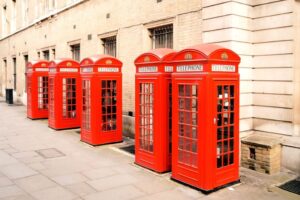It’s the dawn of a new era for Etihad Airways’ medium-haul network.
The United Arab Emirates carrier is taking delivery of its hotly anticipated Airbus A321LR, or “long-range,” which is designed to seriously upgrade the travel experience for medium-haul flights to and from its Abu Dhabi hub at Zayed International Airport (AUH).
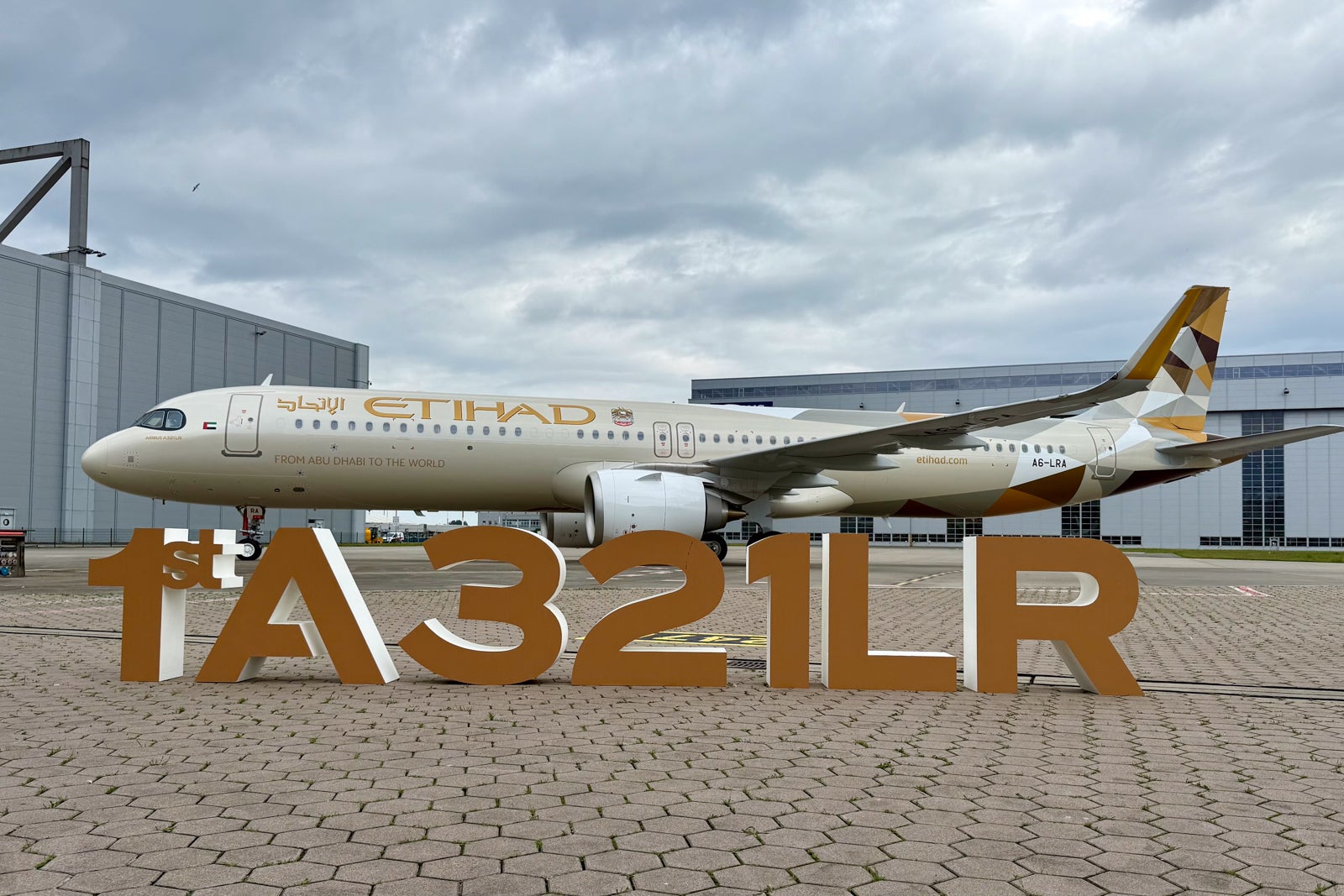
The A321LR is the first single-aisle jet in Etihad’s fleet to feature a proper first-class product and lie-flat pods in the business-class cabin.
This plane ushers in several other upgrades that flyers will undoubtedly enjoy during their journeys onboard the A321LR.
Better yet, the A321LR allows Etihad to expand to several new destinations that it couldn’t reach with smaller planes or that didn’t have enough demand to fill a much-larger twin-aisle jet.
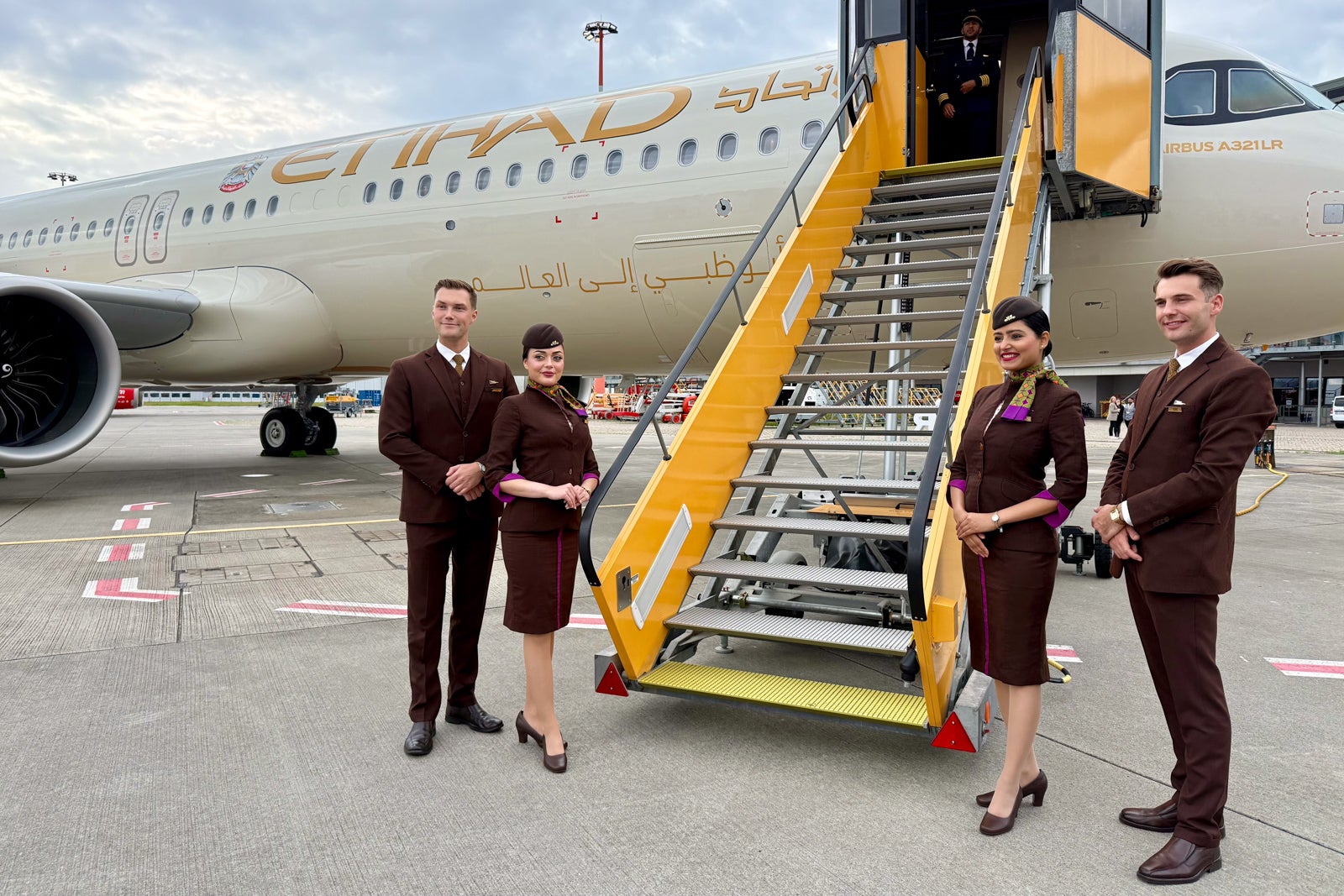
In anticipation of the jet’s inaugural flight on Aug. 1, I traveled to Airbus’ manufacturing facility in Hamburg, Germany, to get a first look at this jet (and to join the delivery flight to Abu Dhabi).
Here’s everything you need to know about Etihad’s A321LR — and why it’s such a big deal for the airline.
Etihad Airbus A321LR first class
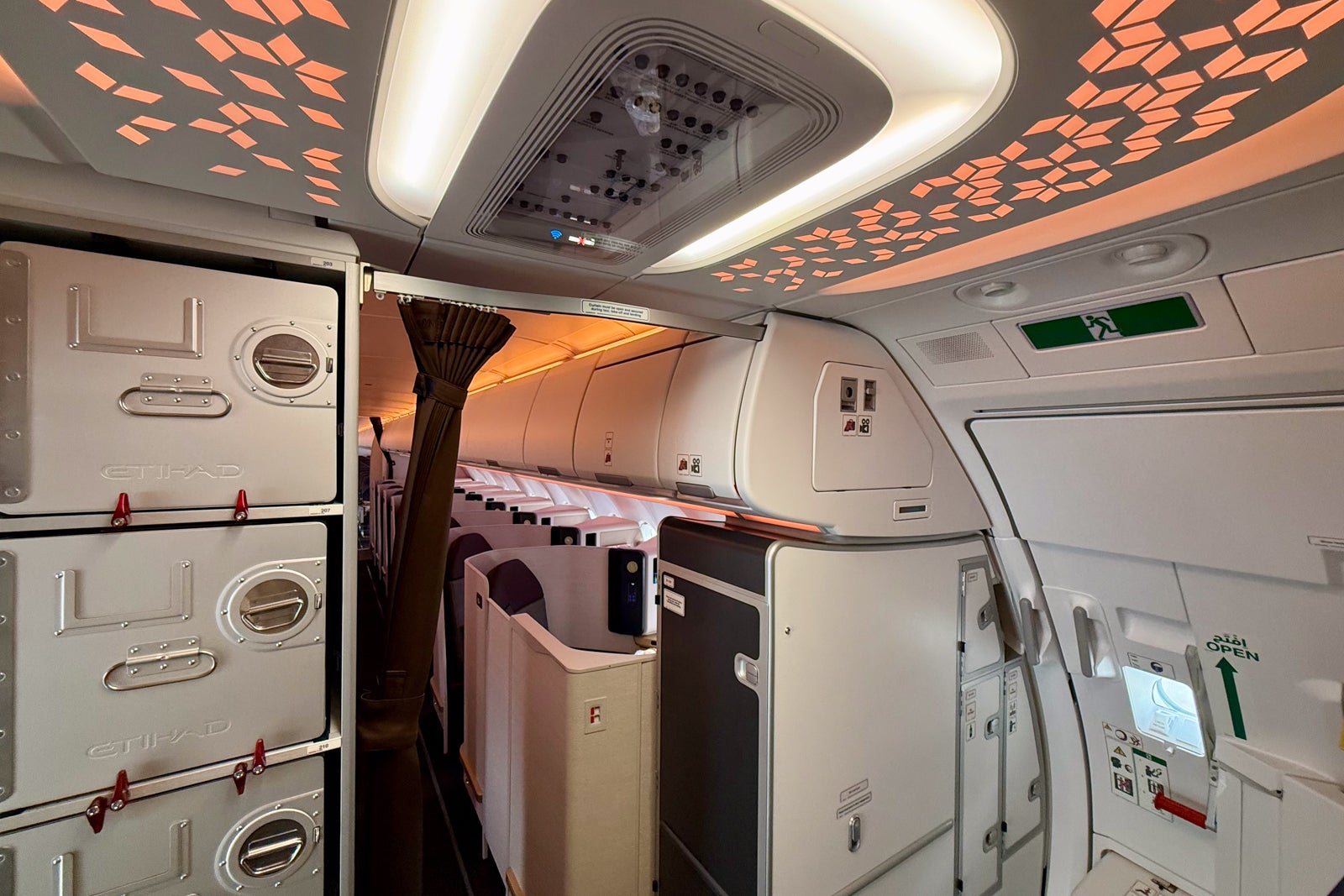
The star of the show is undoubtedly the all-new first-class product on this plane, which is located in the bulkhead row 1 right at the pointy end of the plane.
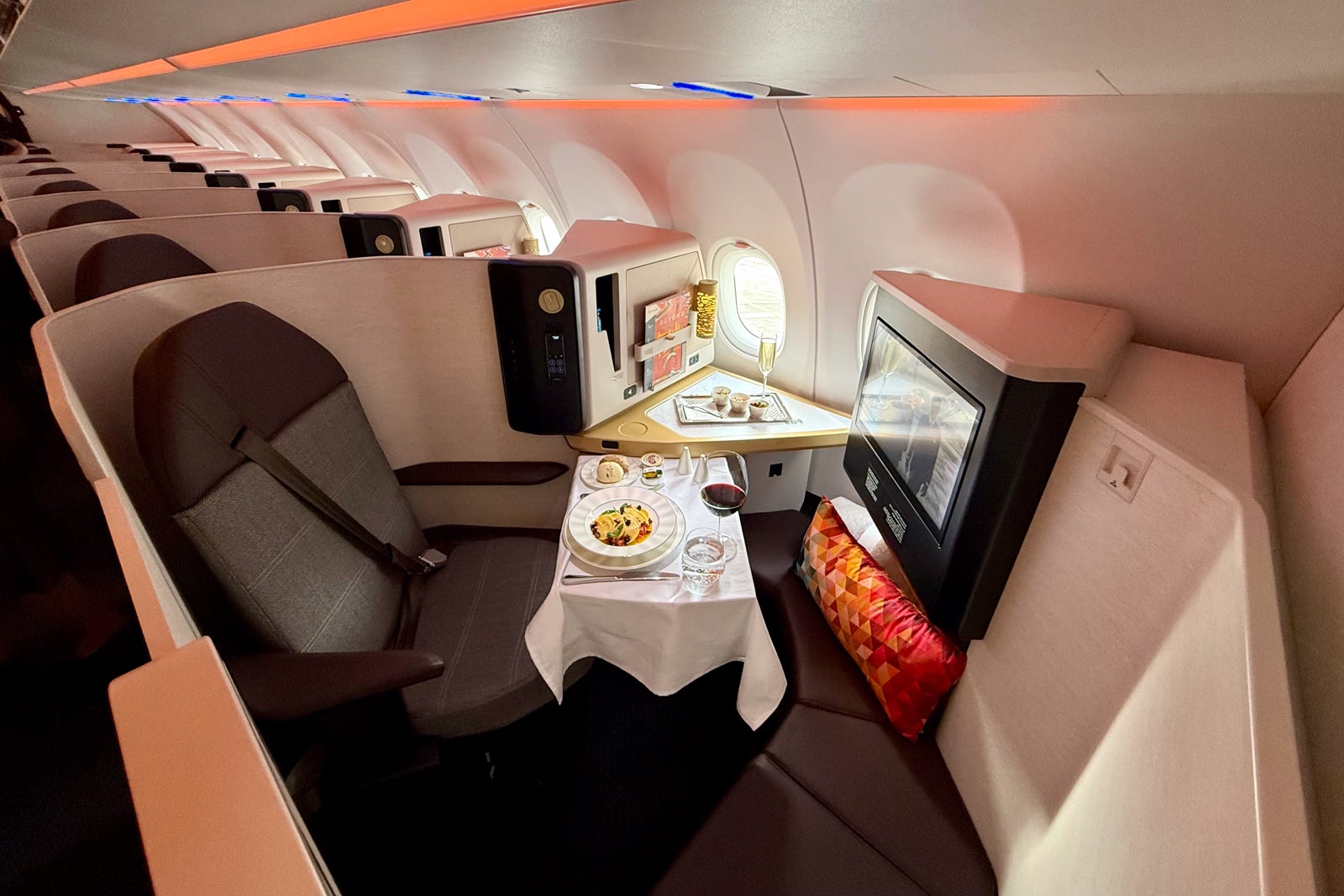
There are two first-class suites spread across the aisle in a 1-1 configuration.
The 22.5-inch-wide seats feature 20-inch 4K TVs, a buddy seat for a companion to join for a meal, Bluetooth audio connectivity, Qi wireless charging and much more.
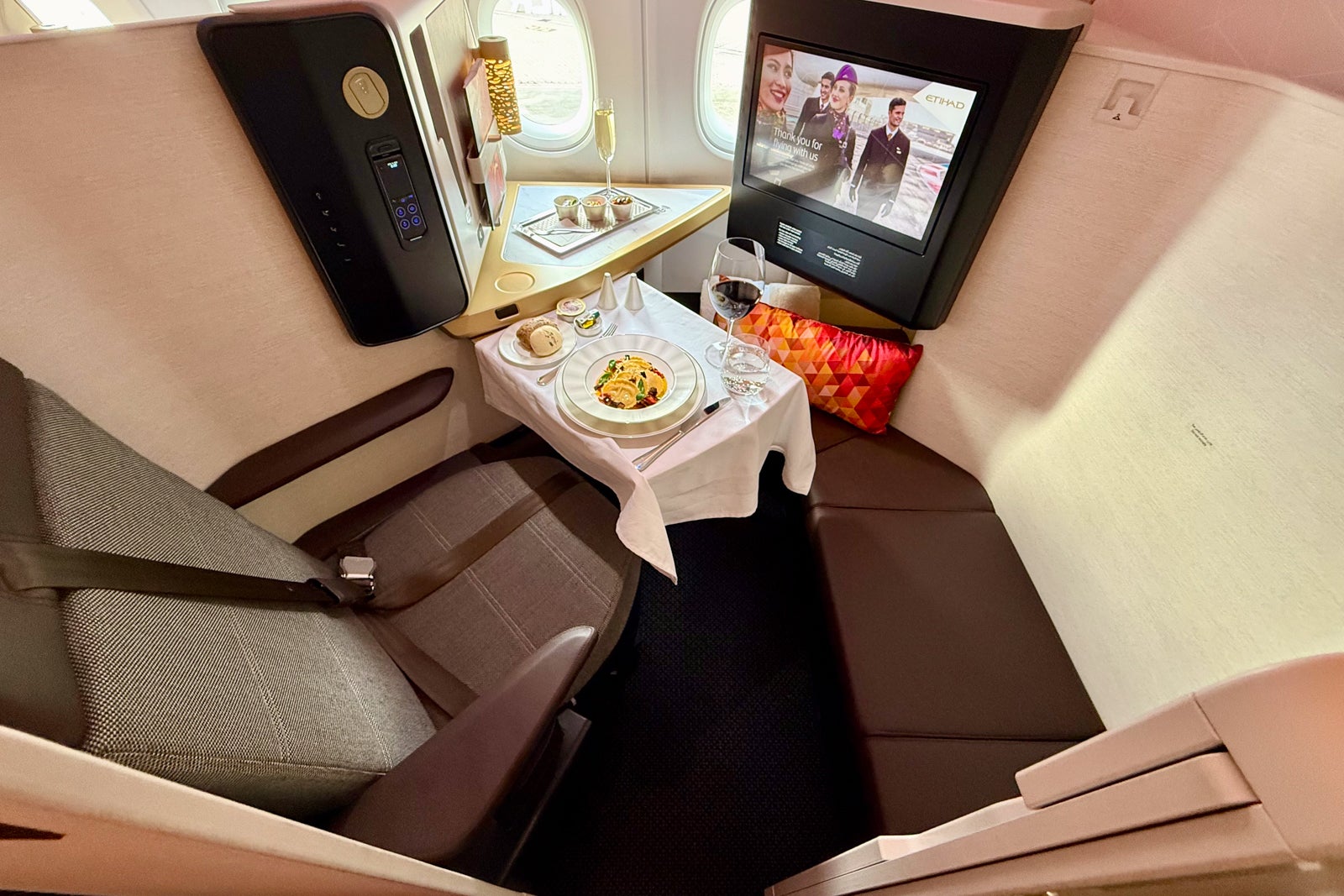
There are sliding doors for additional privacy.
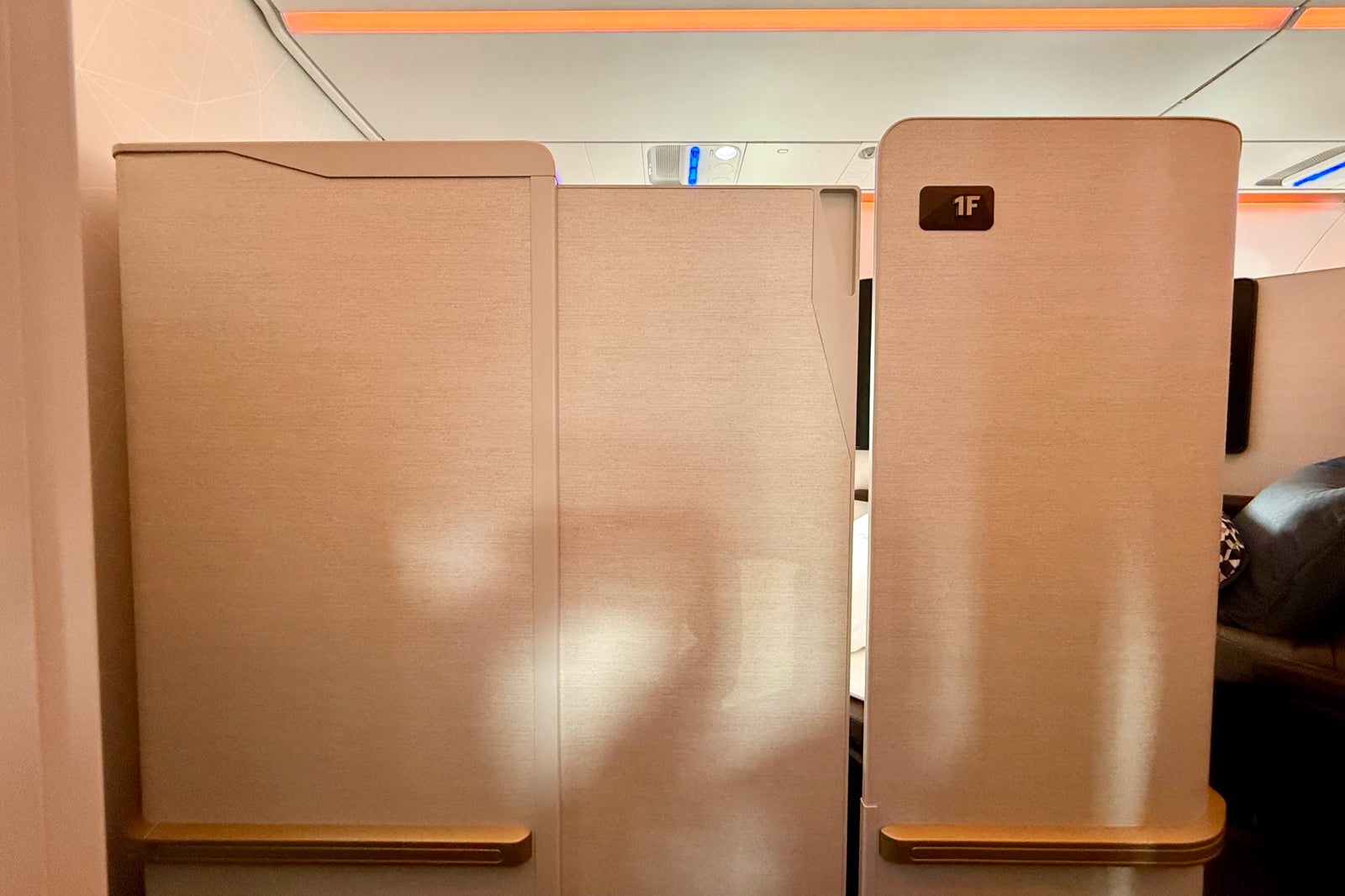
Furthermore, these seats have additional storage space and a larger ottoman and footwell area due to the curvature of the plane and the bulkhead wall.
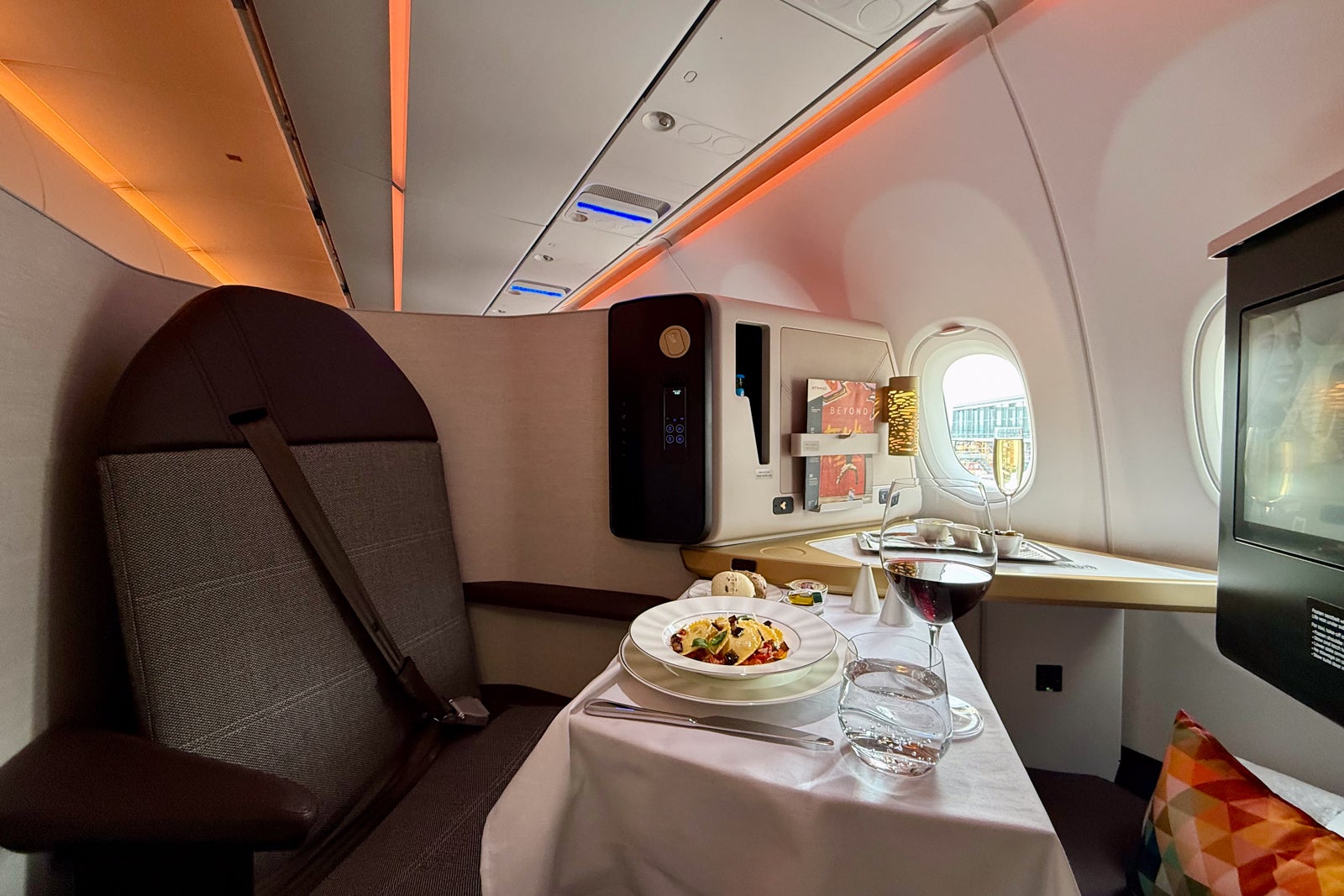
In bed mode, the seats are massive. The oversized footwell area should make it very easy to get comfortable, though the only annoyance might be the proximity to the galley and lavatory.
Frequent flyers, especially those based in the U.S., might recognize these seats as “business-class-plus” products, similar to American’s Flagship Suite Preferred or JetBlue’s Mint Studio, but Etihad is marketing them differently.
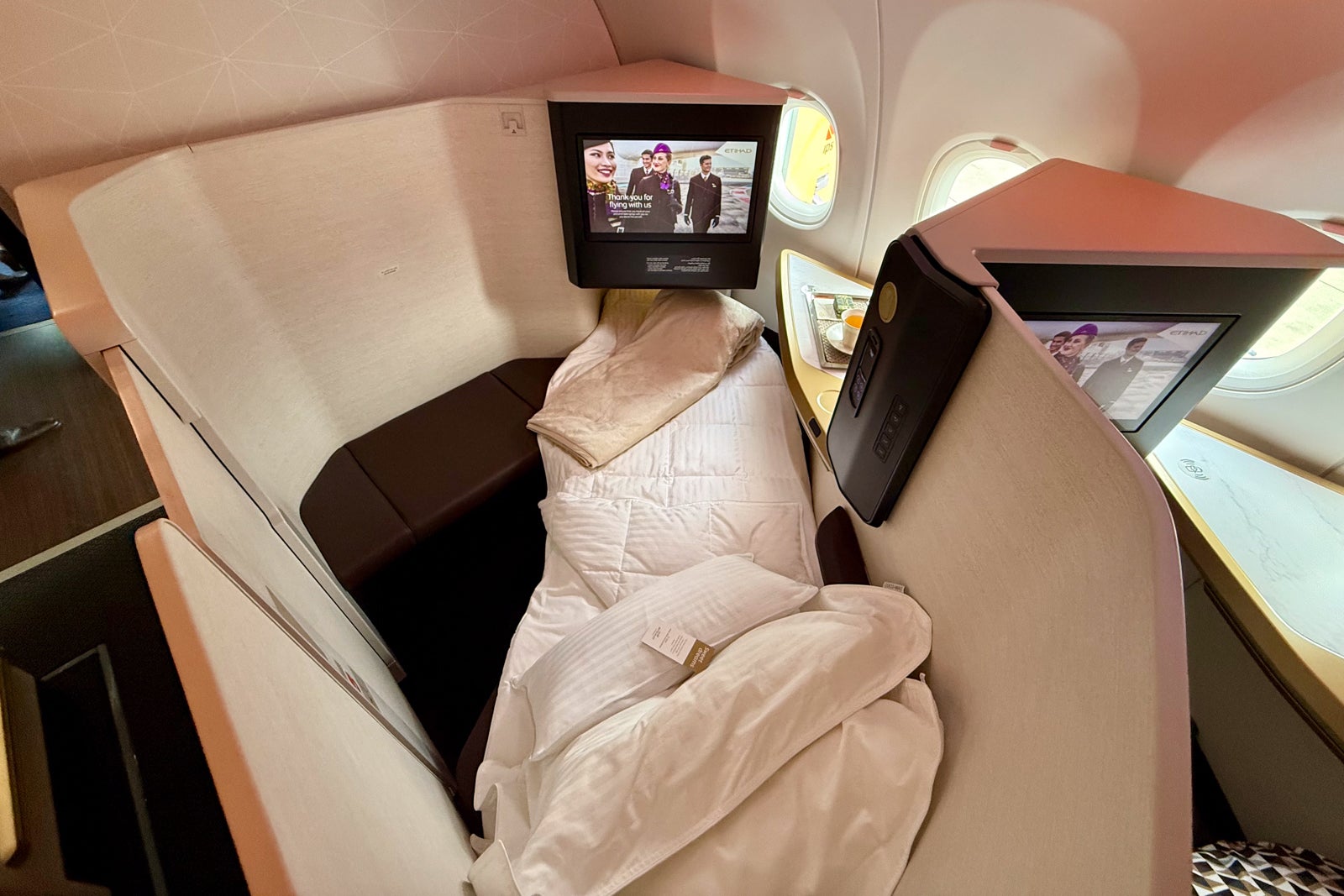
No, there won’t be any cabin dividers between these two first-class suites and the rest of business class, but Etihad says its goal is to ensure that the rest of the experience feels elevated.
From personalized service from a crew member dedicated to first class to better meals to enhanced beverage options, Etihad says the entire first-class experience should mimic what travelers would get on a flight from New York or Chicago to Abu Dhabi.
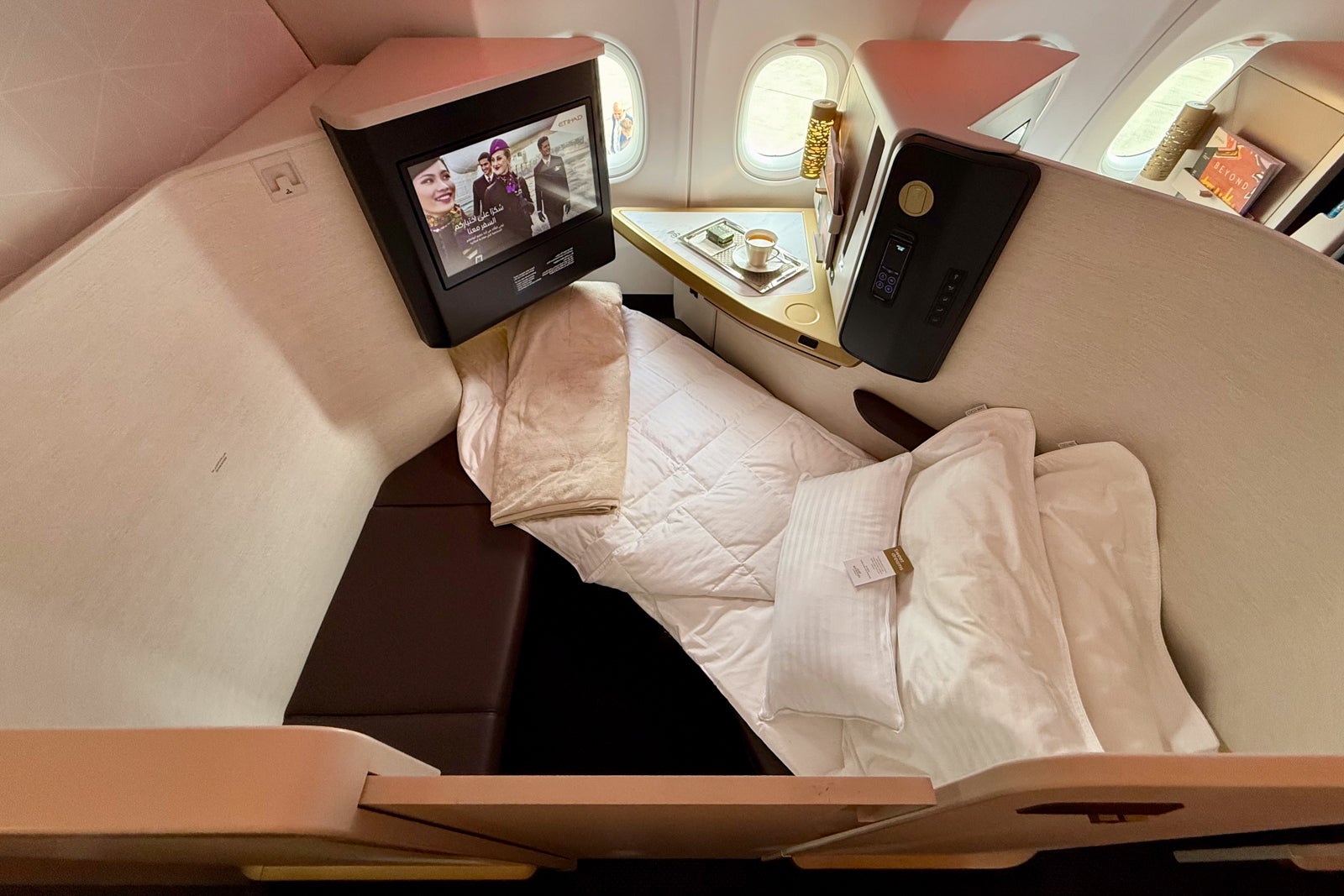
Airline executives explained that Etihad offered first class on these planes so that travelers flying in first from long-haul destinations could connect onto an A321LR and enjoy a seamless experience.
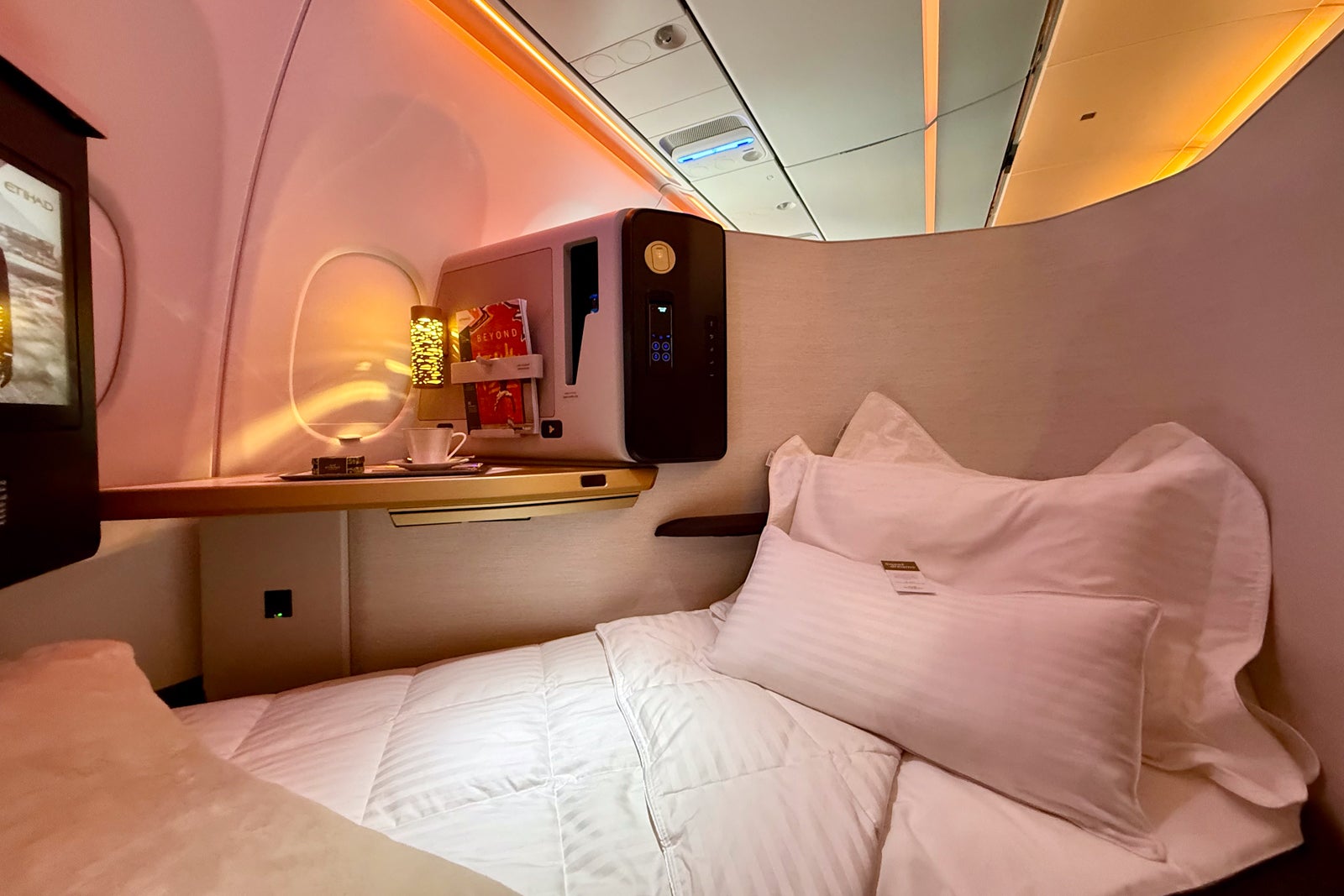
There’s just one standard-sized lavatory at the front of the first-class cabin, and this toilet is shared among all 16 first- and business-class passengers.
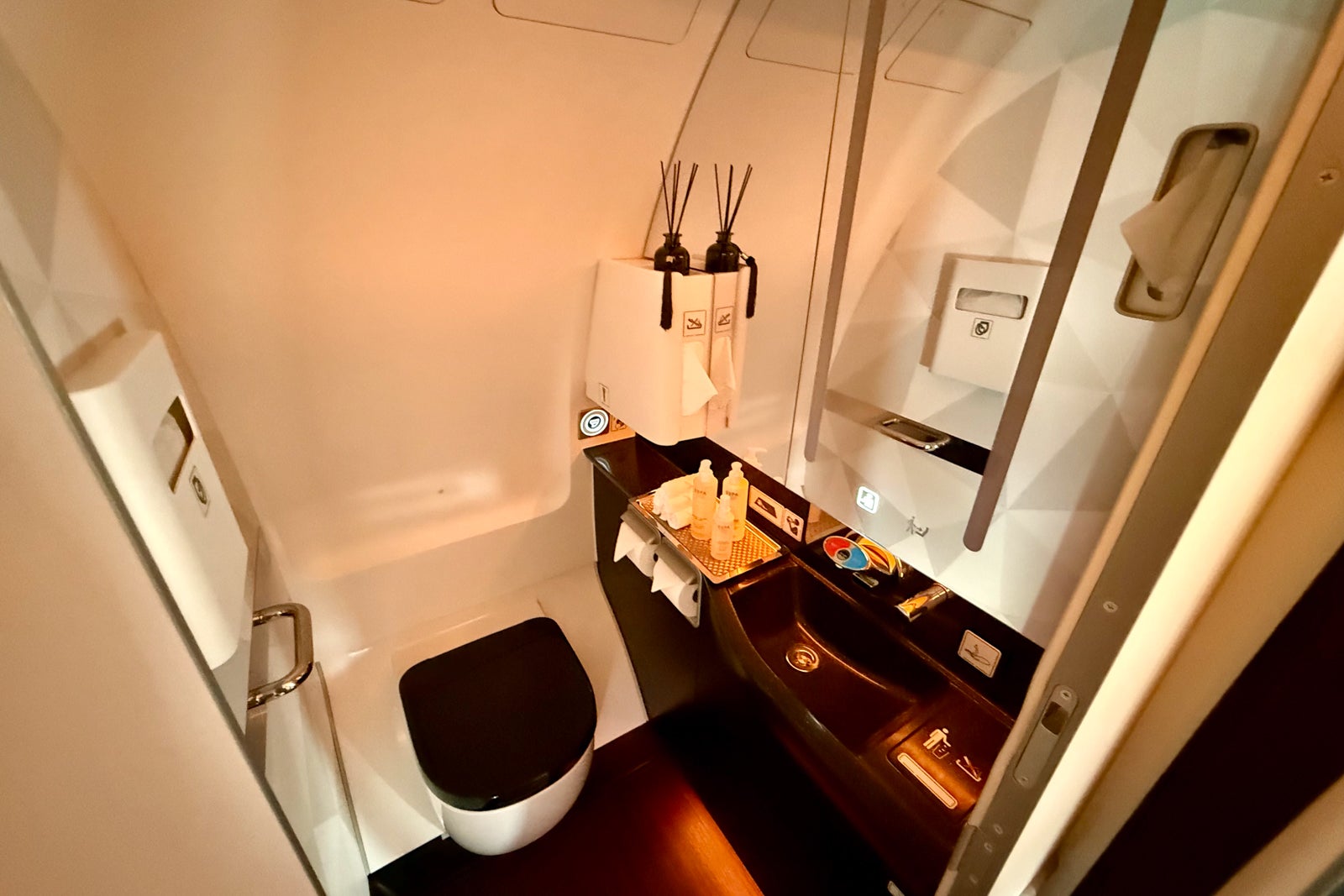
I’d expect that there might be a line to use it during peak periods, such as before initial descent.
Etihad Airbus A321LR business class
Behind first class is the business-class cabin outfitted with 14 pods in a 1-1 configuration.
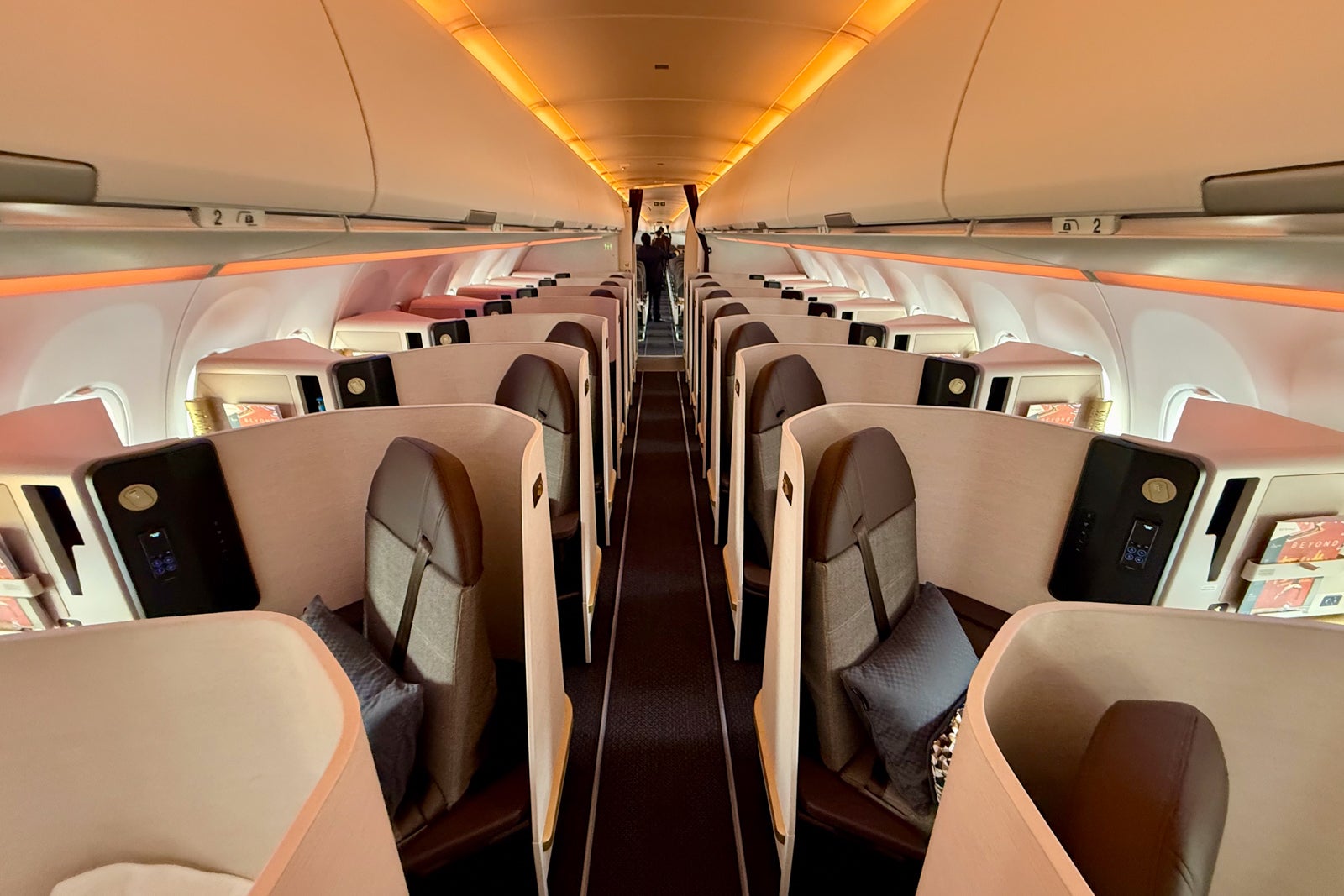
Seats face toward the window in a reverse herringbone layout designed to maximize privacy. Etihad chose a customized version of the Stelia Opera seat in biz.
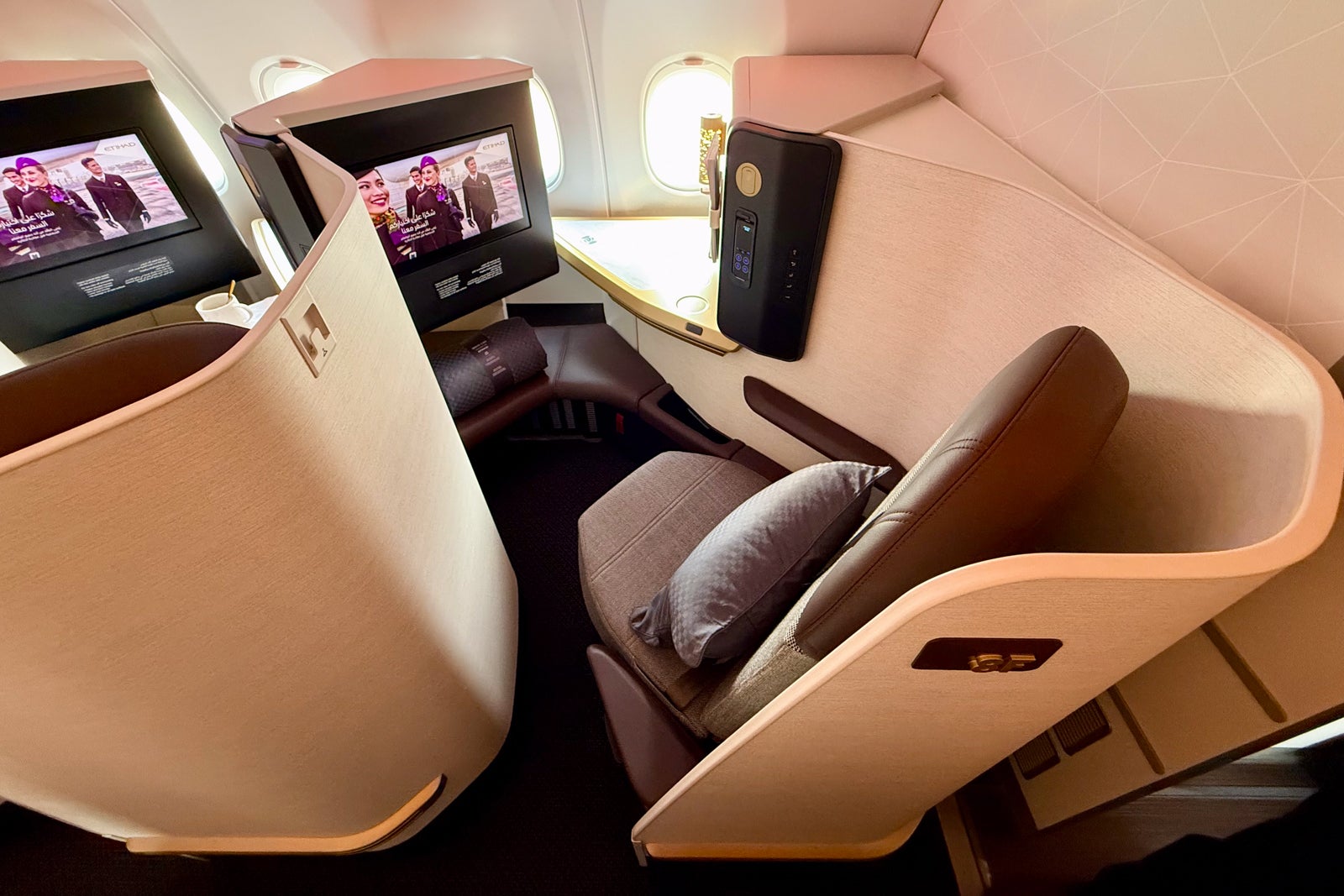
Aside from less storage and personal space, one big difference between first and business class is the lack of doors in biz.
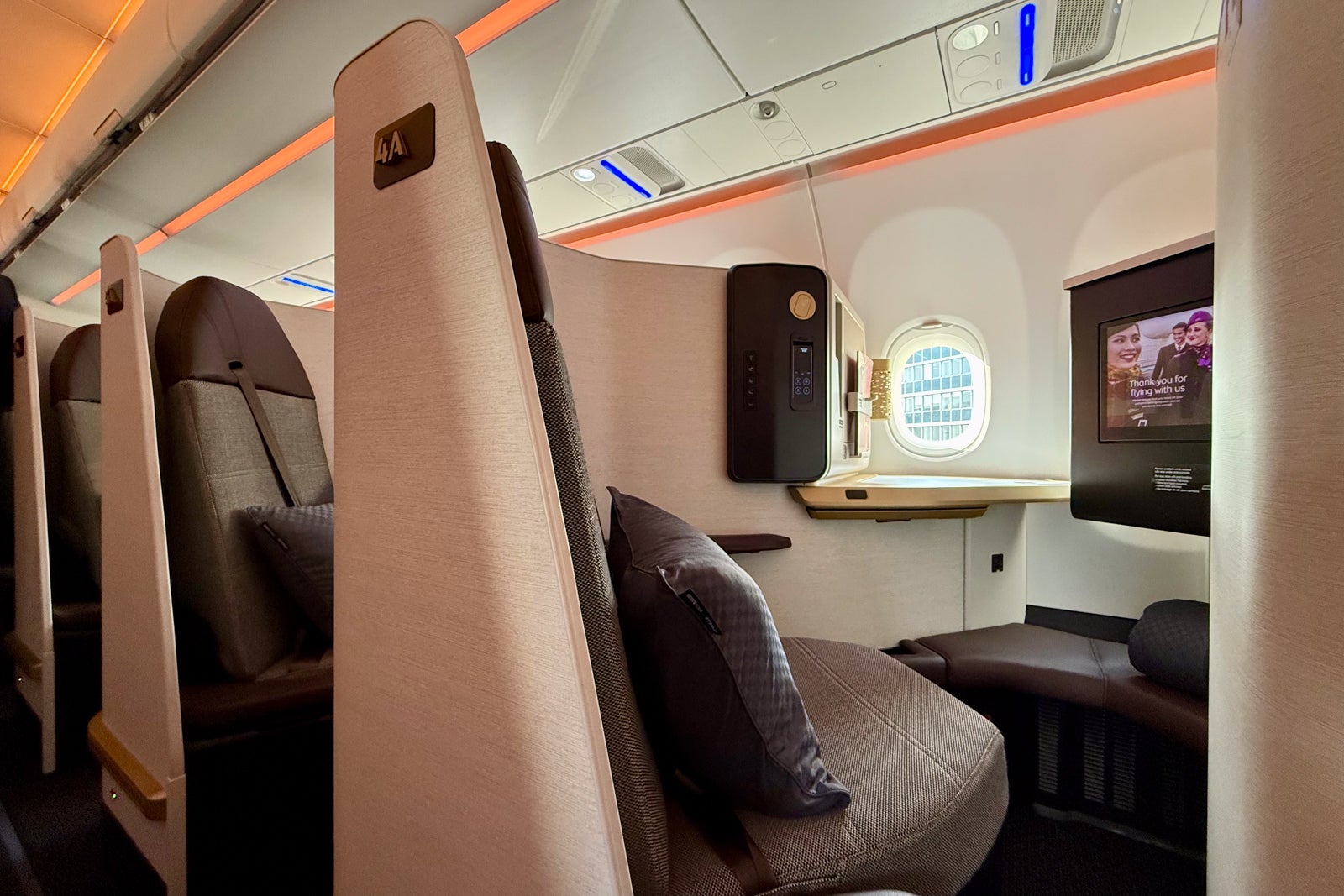
While many airlines are all-in on sliding doors, Etihad simply needed to make a tradeoff here. Since the airline operates in one of the hottest regions in the world, adding doors would potentially mean the plane would need to be payload restricted on the hottest days, meaning that the airline would reduce passengers or cargo to lower the weight to be able to takeoff in such conditions.
That’s clearly a tradeoff Etihad wasn’t willing to make.
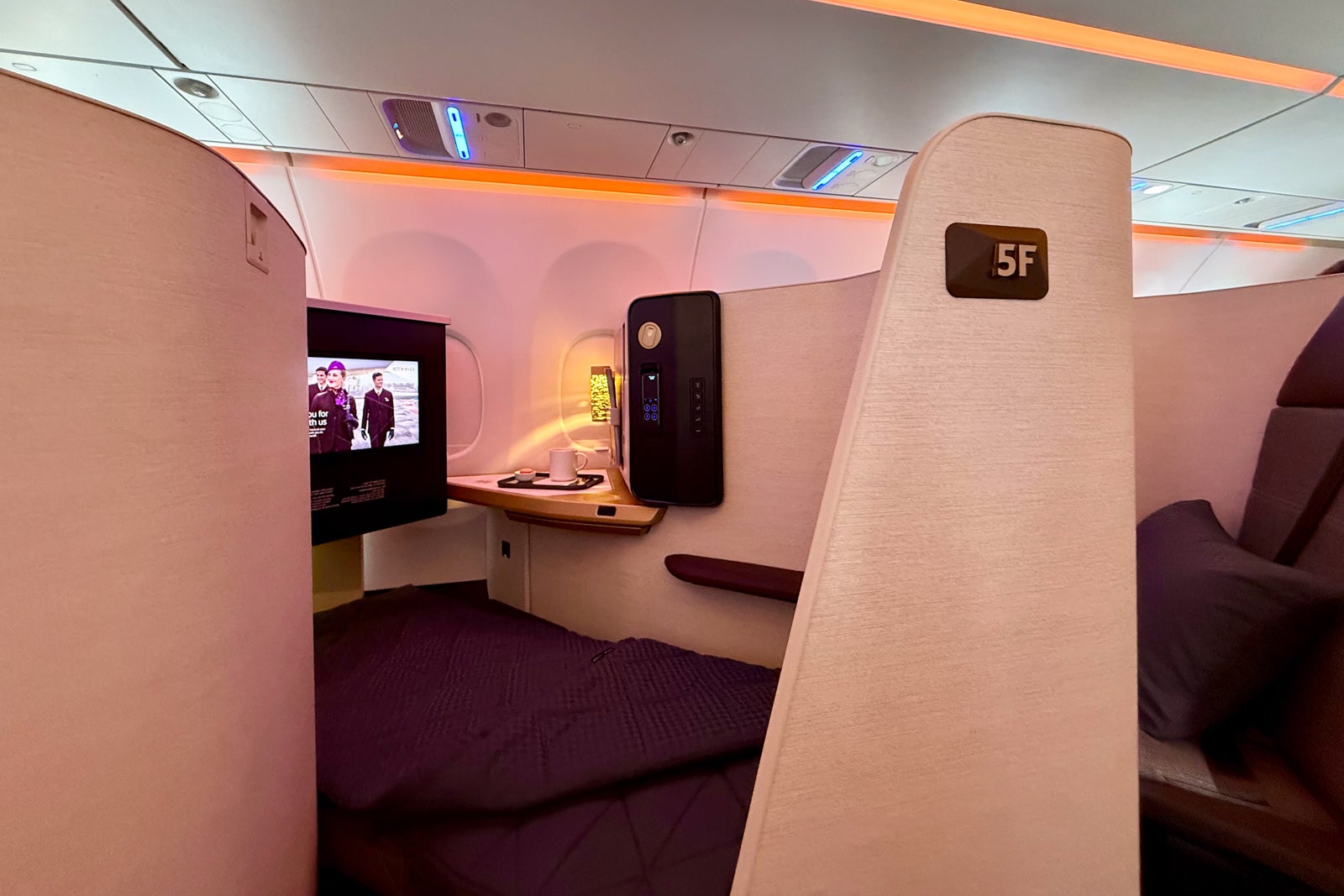
That said, while I certainly would’ve appreciated a door, the reverse herringbone layout definitely helps give you more privacy than if you were facing the aisle. I felt like I was in my own cocoon when trying out these seats for dining and relaxing, but I imagine that a door would really help me feel more zen when it came time to sleeping.
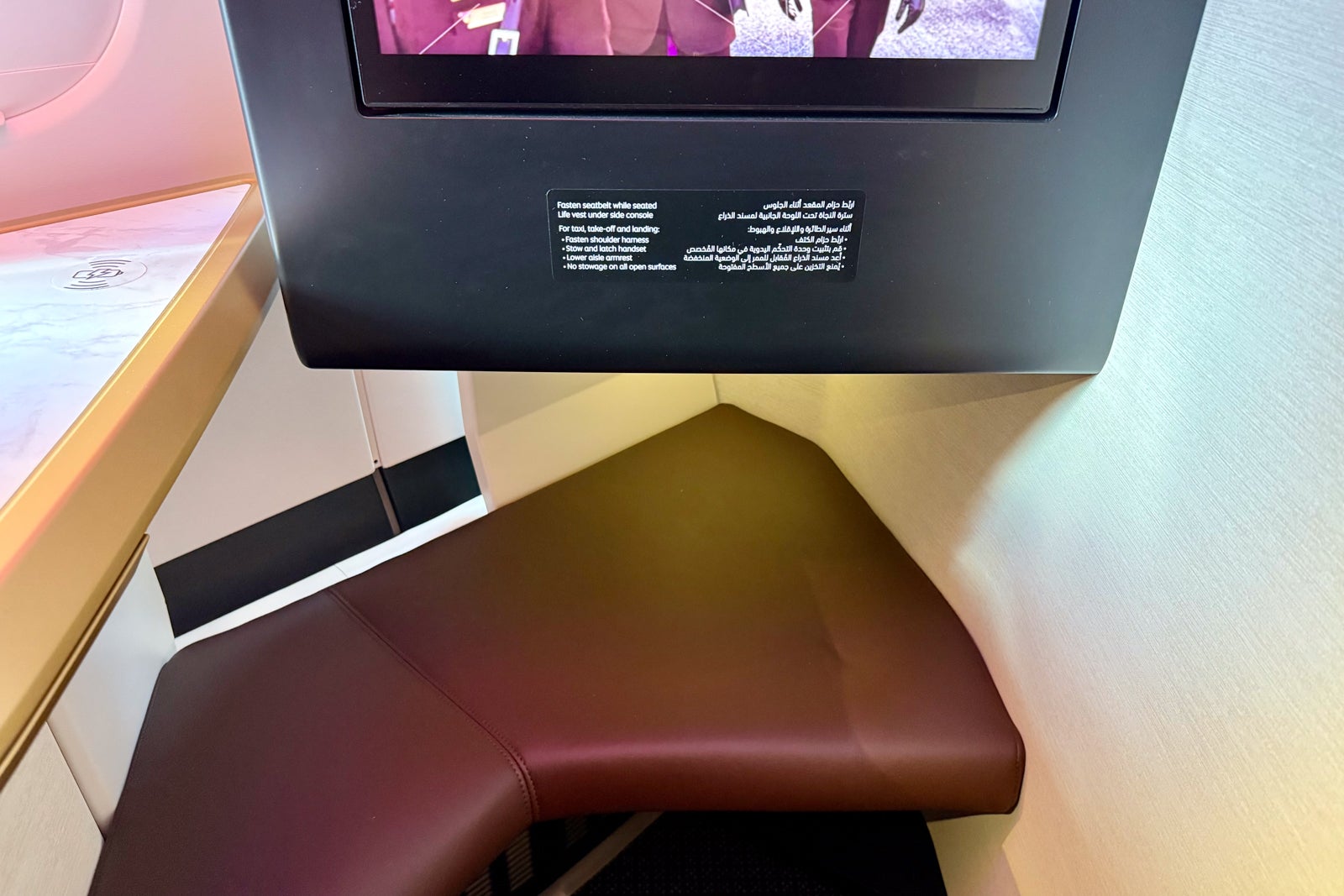
Speaking of sleeping, the seats convert to lie-flat beds that measure 78 inches long. Unlike many other biz products, I loved that Etihad went with an open footwell area, which should make it much easier to get comfy at night.
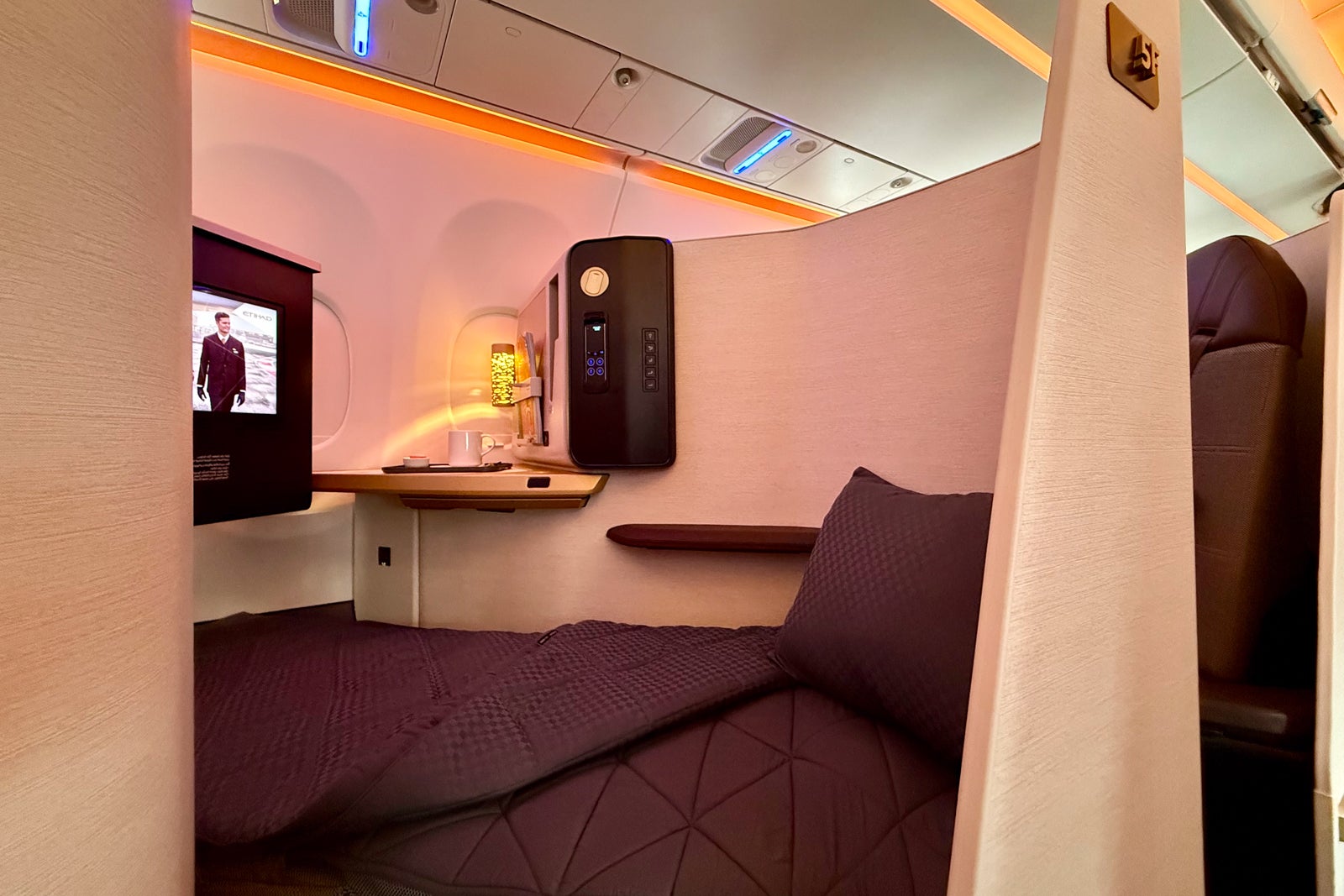
Tray tables pop out from under the armrest and measure 20 inches long and 15.5 inches wide.
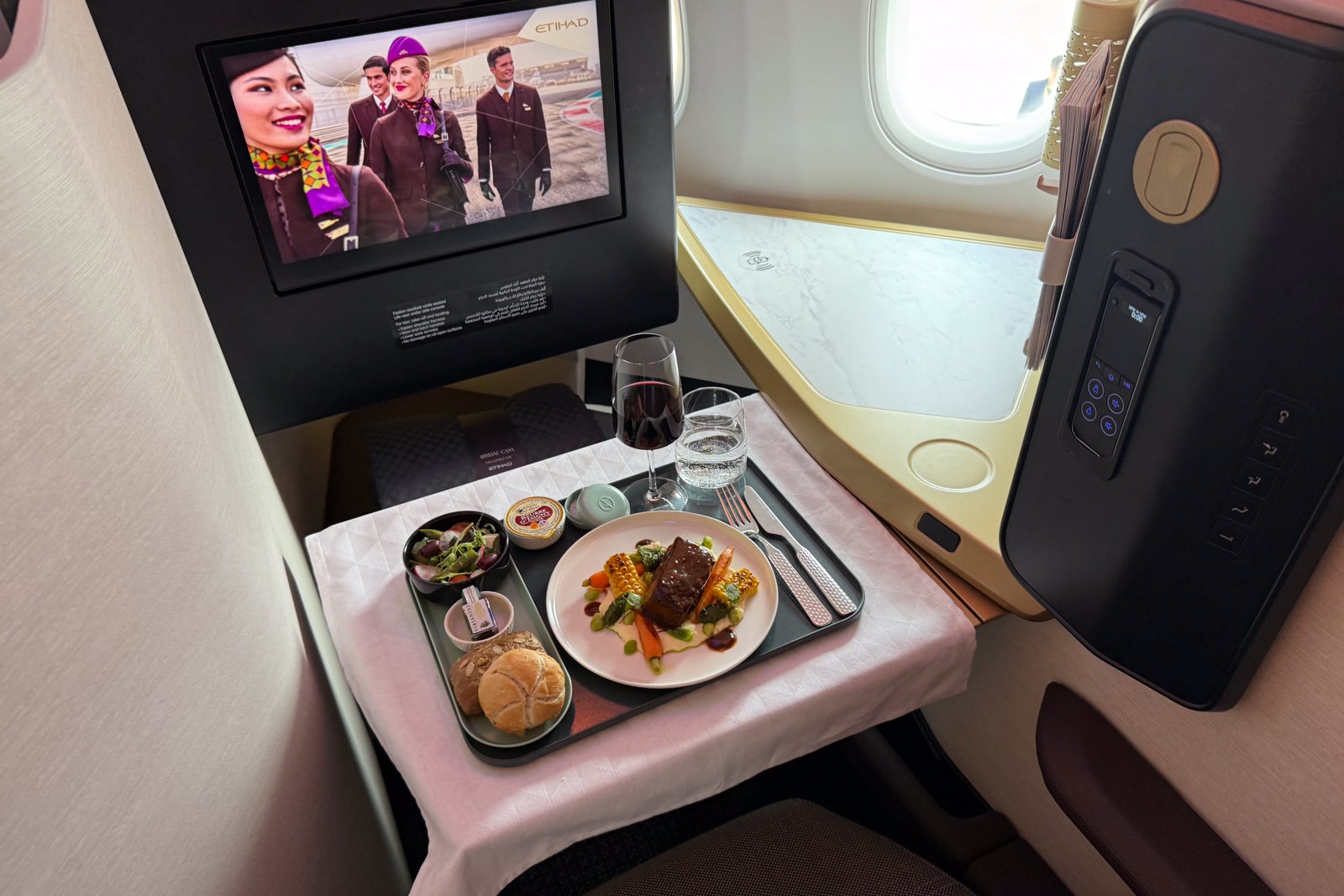
The gold sconce attached to the door adds just the perfect amount of form and function, providing some much-needed light at night while also feeling luxurious.
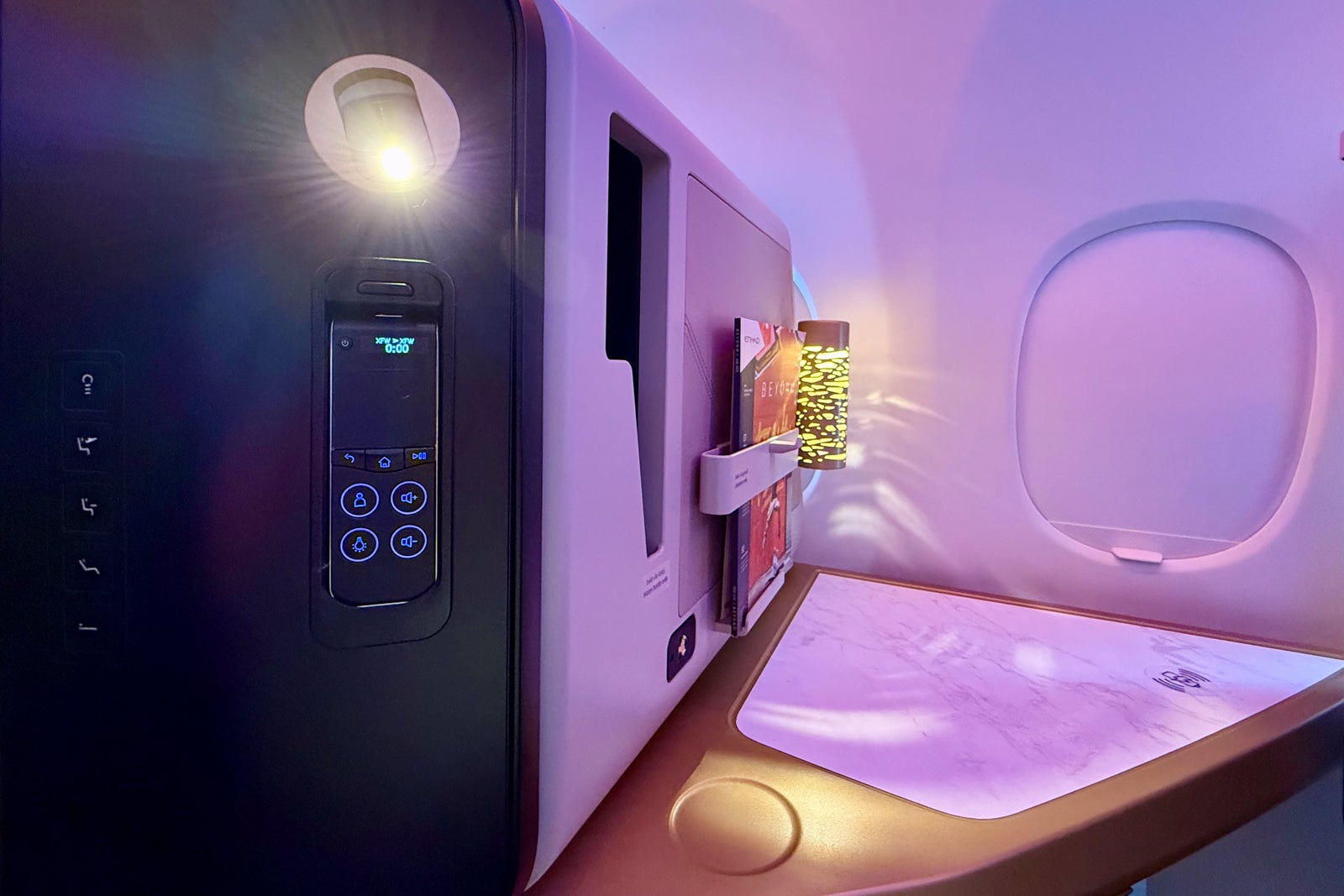
Unfortunately, the seats don’t feature any enclosed storage areas — a small detail that I’m sure some will miss.
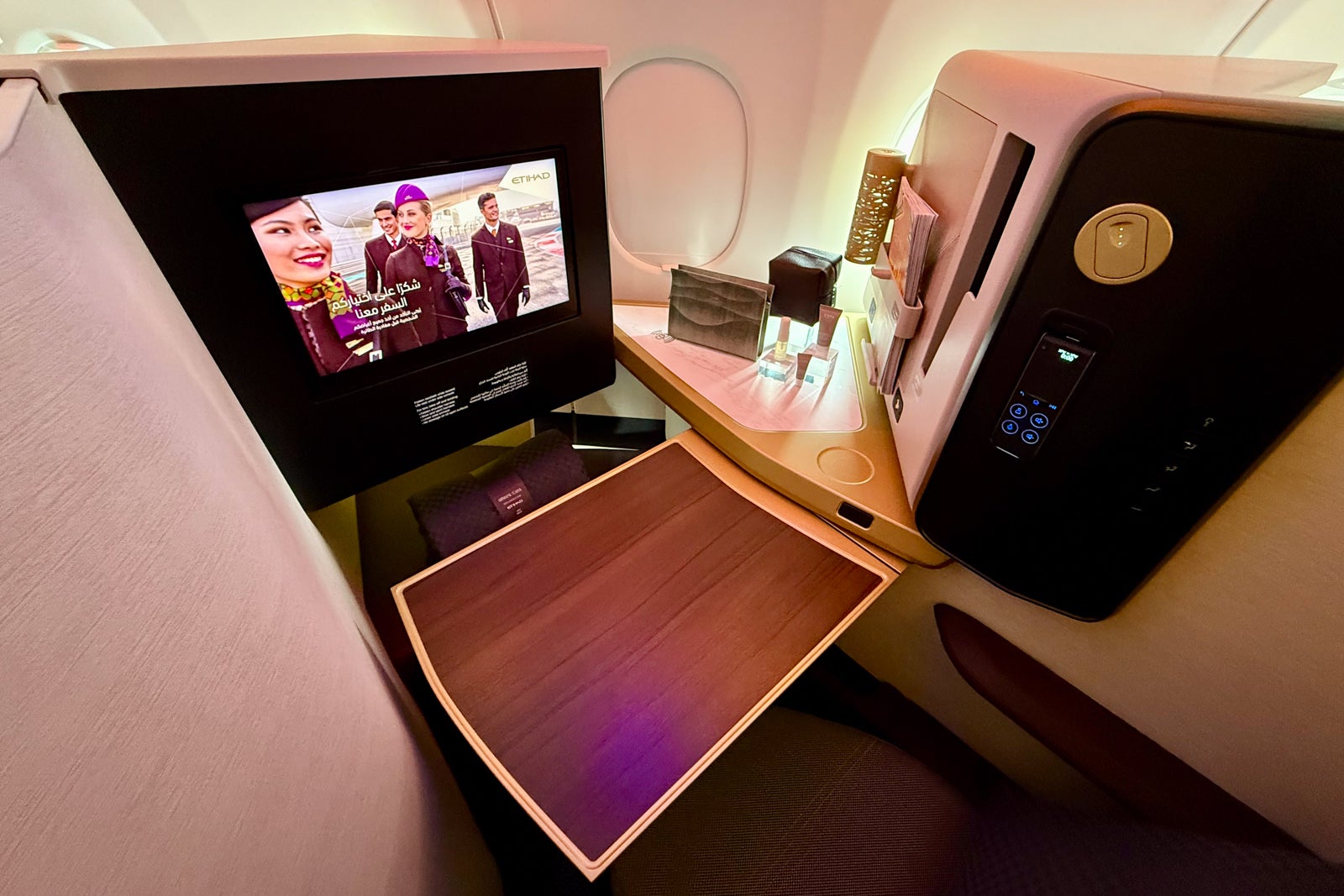
In terms of tech, each pod features 17.3-inch 4K TVs, Bluetooth audio connectivity to wirelessly pair AirPods and other wireless headphones, Qi wireless charging pads, USB-C and USB-A ports and a universal power outlet.
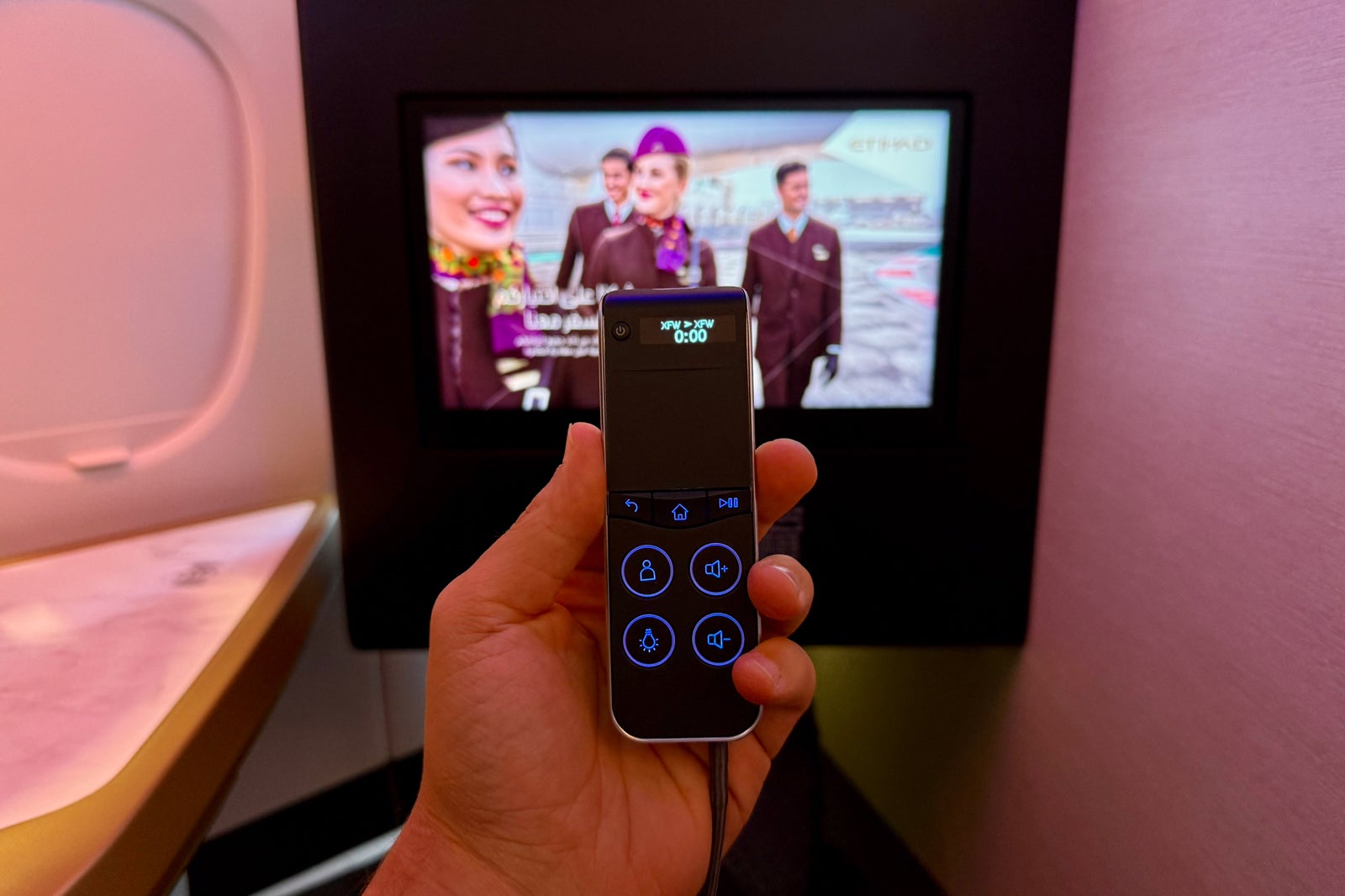
Speaking of design, I loved Etihad’s muted-yet-elevated tones, especially the gold trim around the side table, which is covered with faux marble — another premium touch.
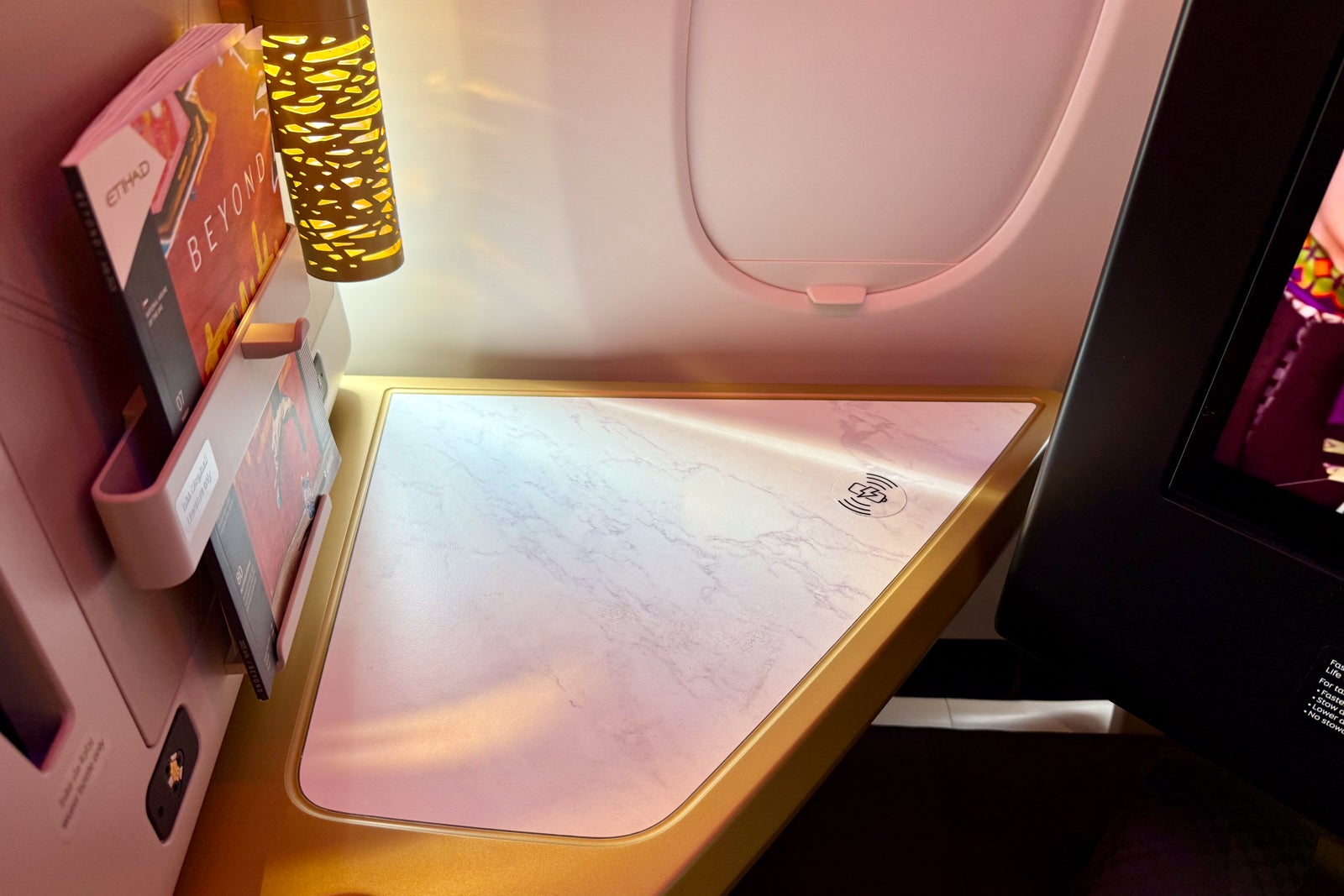
Seat controls are located at shoulder level in a vertical position. The armrest adjacent to the aisle can be raised or lowered, but the one attached to the seat can’t be adjusted.
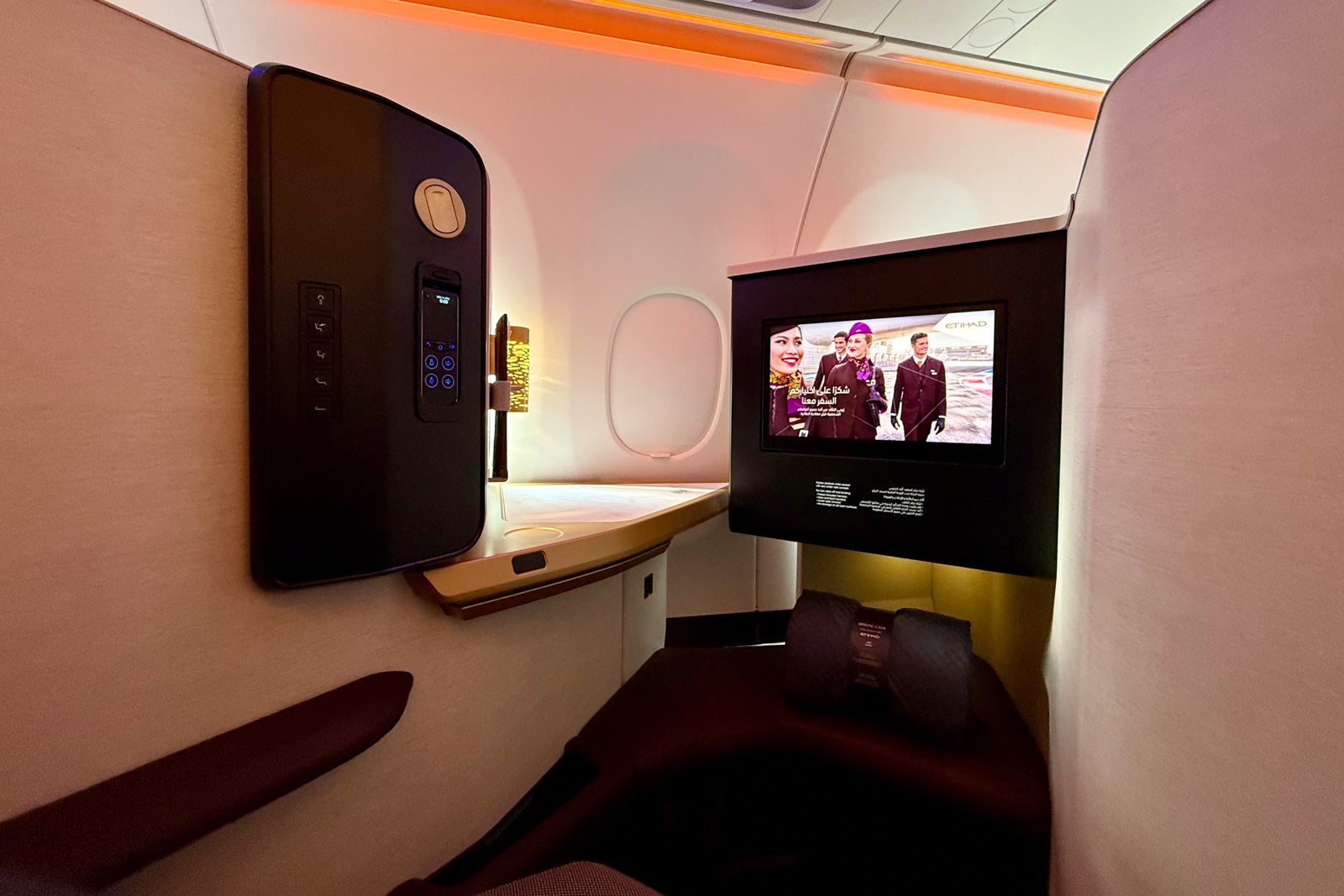
As mentioned, there is just one lavatory at the front of the business-class cabin, which is shared with first-class flyers.
In terms of where to sit, the good news is that no seat is missing windows, so I’d choose something in the midcabin to avoid any noise that might emanate from people lining up for the lavatories at the front of the economy cabin.
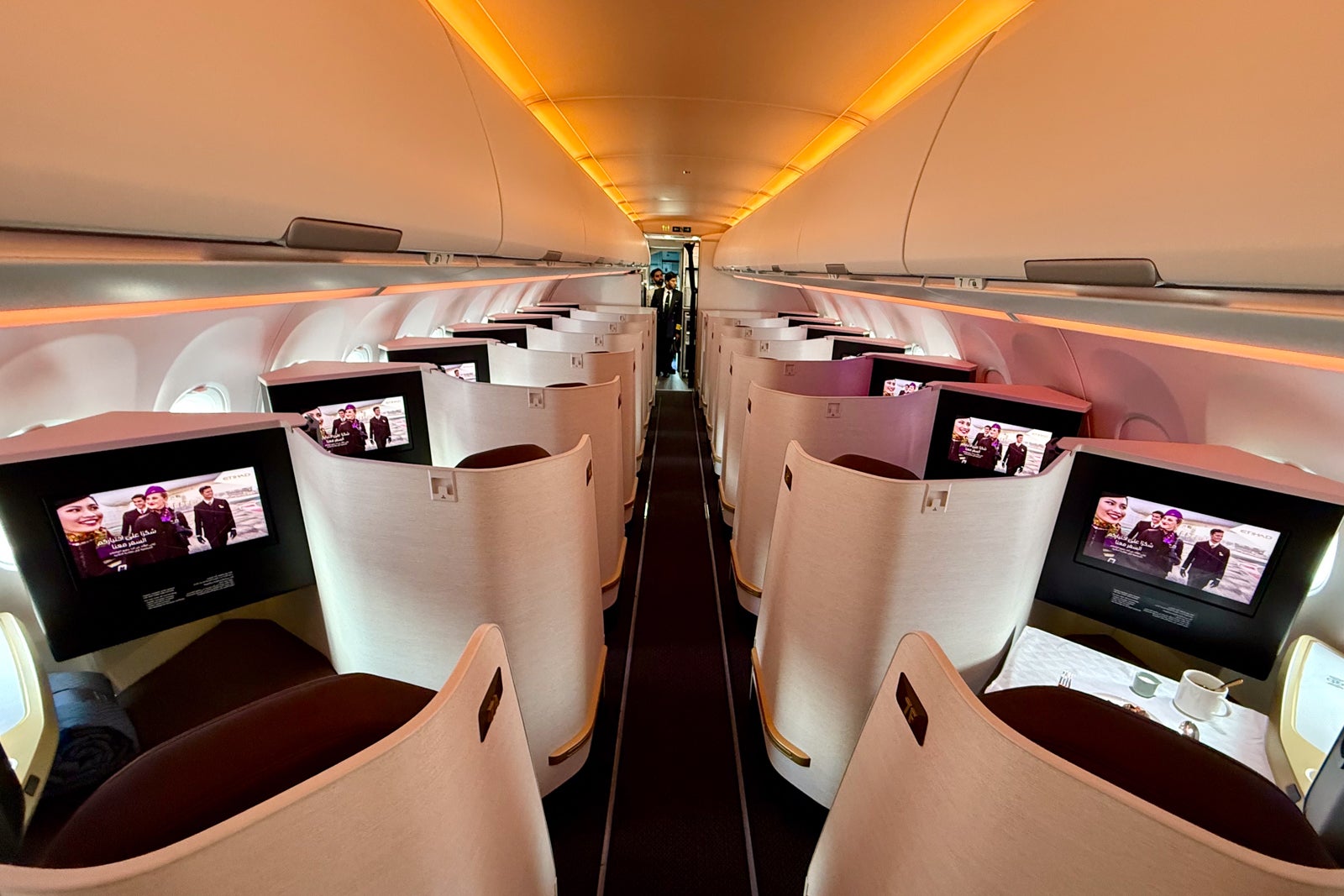
All in all, this jet’s business-class cabin should be super comfy for medium-haul travel, and I can’t wait to give it a try on the delivery flight from Hamburg to Abu Dhabi in the coming days — more on that soon.
Etihad Airbus A321LR economy class
While the most posh seats are at the front of the plane, the majority of flyers on the A321LR will be seated in one of the jet’s 144 economy seats.
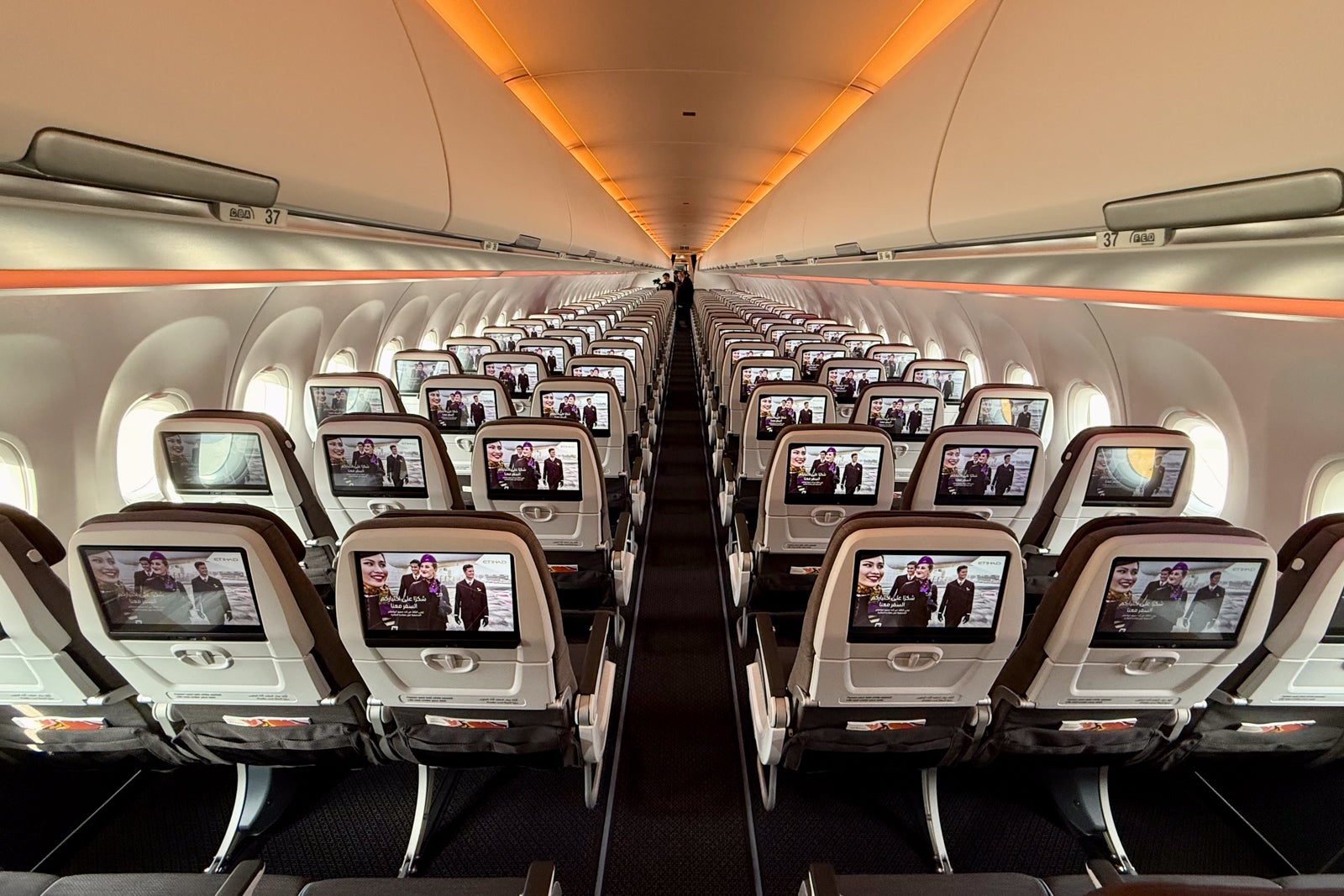
There are six rows of extra-legroom seats featuring 34 inches of pitch, while the remaining seats offer 30 inches of pitch. All seats measure 18.4 inches wide. Seats recline 5 inches.
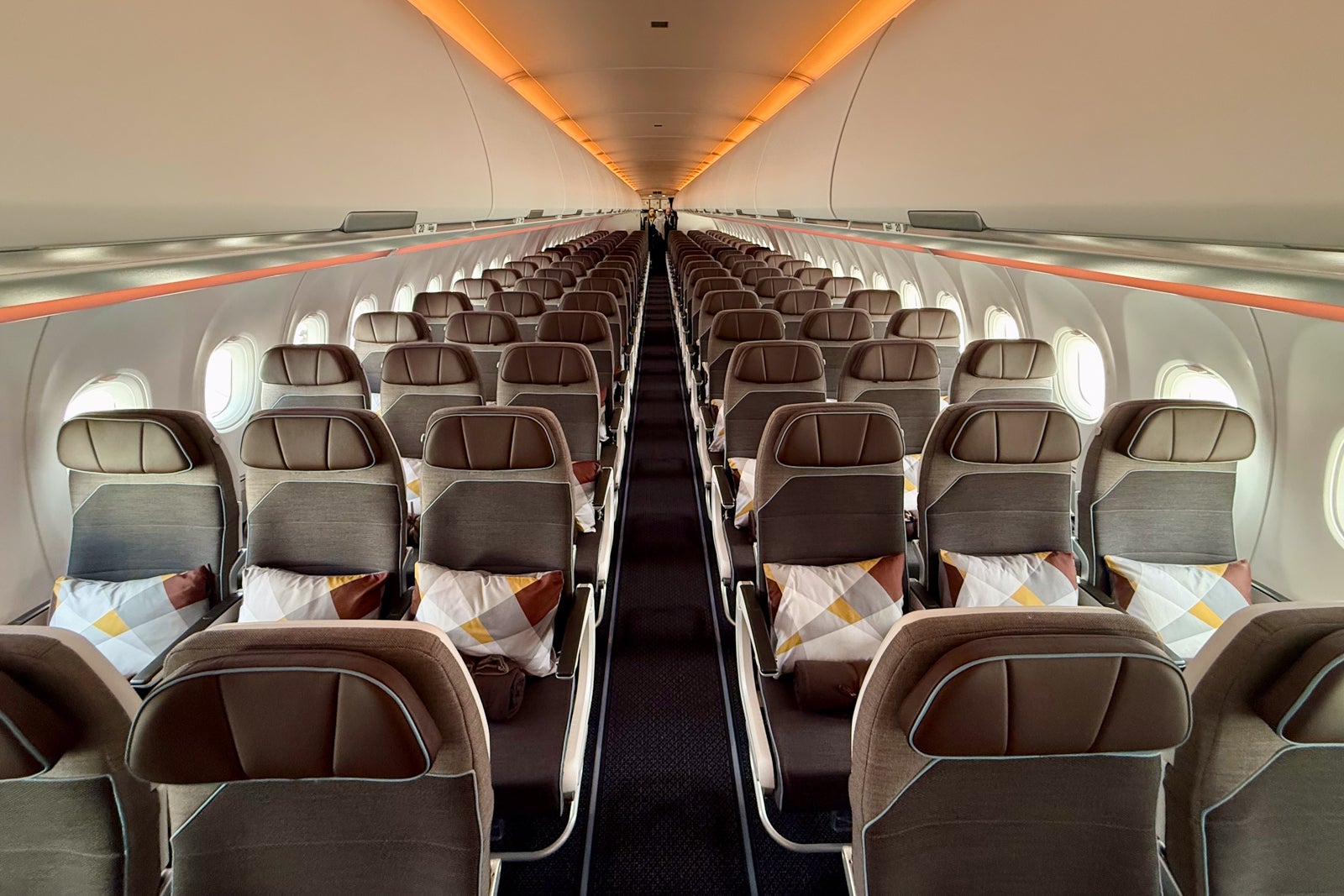
Note that row 29 is missing windows, while row 28 has a misaligned window due to the exit door that’s been sealed shut on this plane.
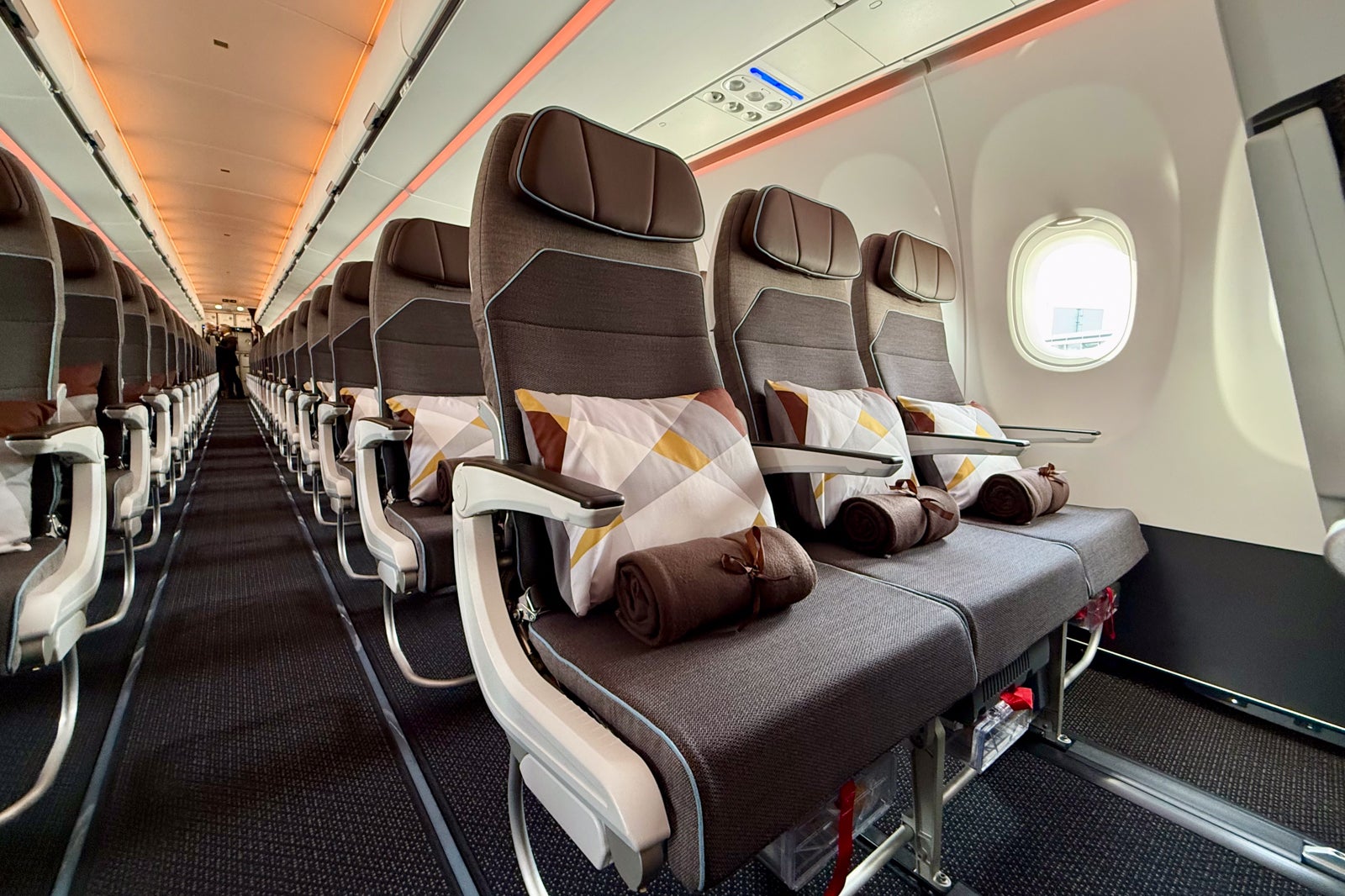
If I’m seated in economy on this plane, I’d probably select the exit row 19 for plenty of additional legroom. (Even though row 18 is also an exit row, seats here don’t recline, so just beware.)
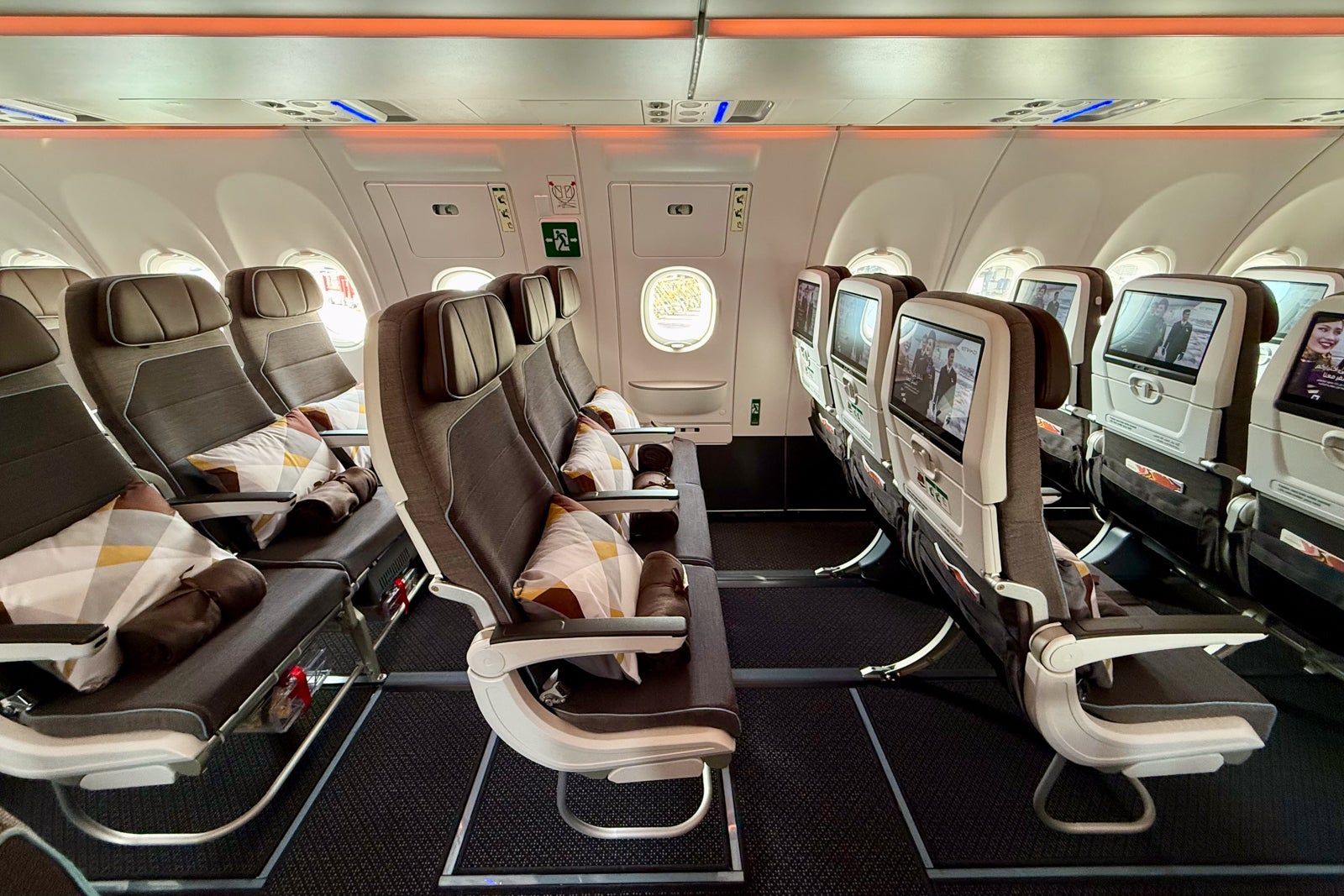
That said, Etihad’s economy experience is about as good as it gets, and Etihad tried to give this single-aisle jet a wide-body feel.
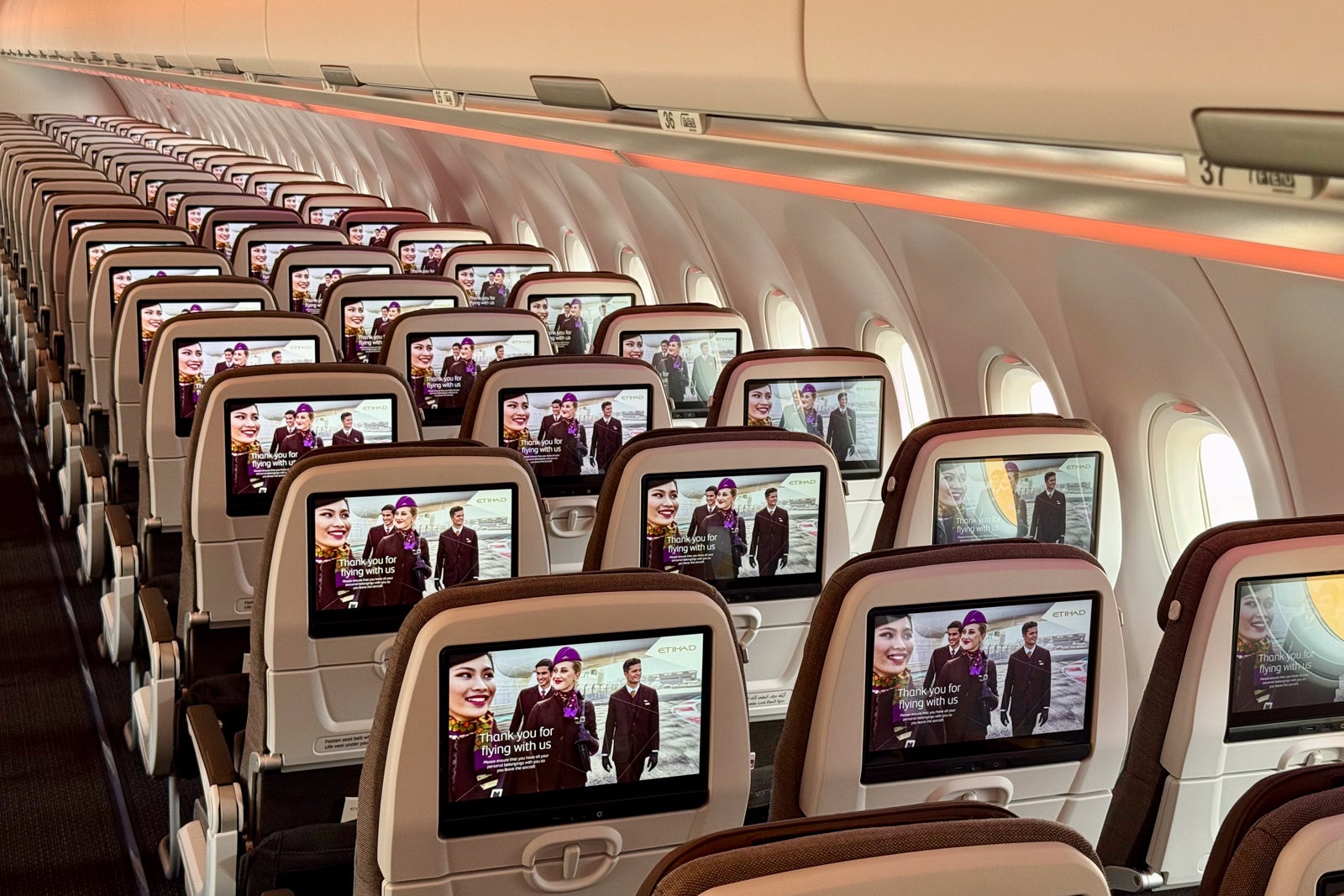
For one, every seat features 13.3-inch 4K monitors, as well as USB-A and USB-C charging ports. Unfortunately, there are no power outlets in economy — a big miss on Etihad’s part, in my opinion.
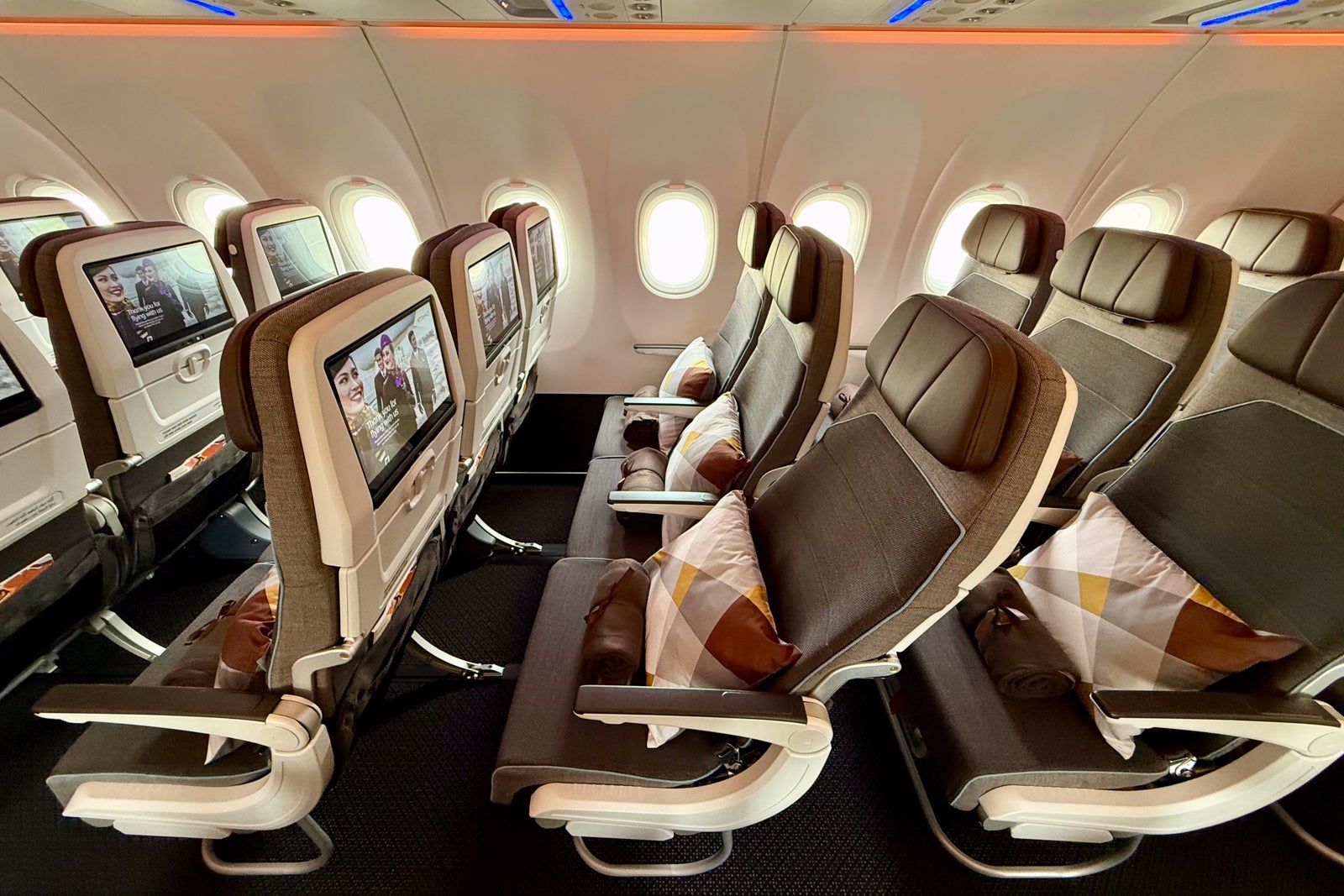
Tray tables fold down from the seat in front.
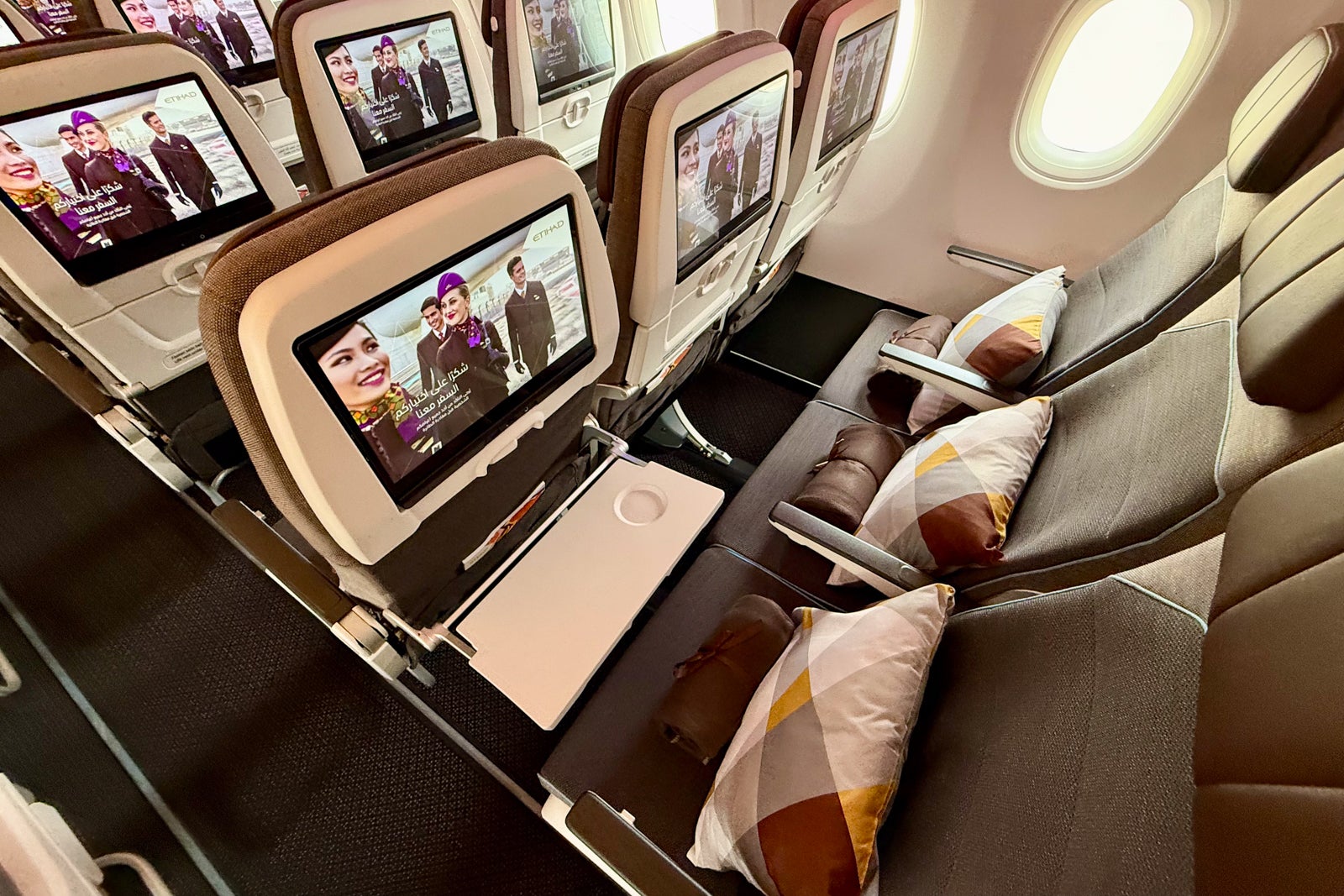
Other premium touches that elevate the economy experience include nose-to-tail mood lighting strips, but unfortunately, Etihad didn’t opt for the signature Airbus overhead lights that airlines like JetBlue and United installed on similar jets.
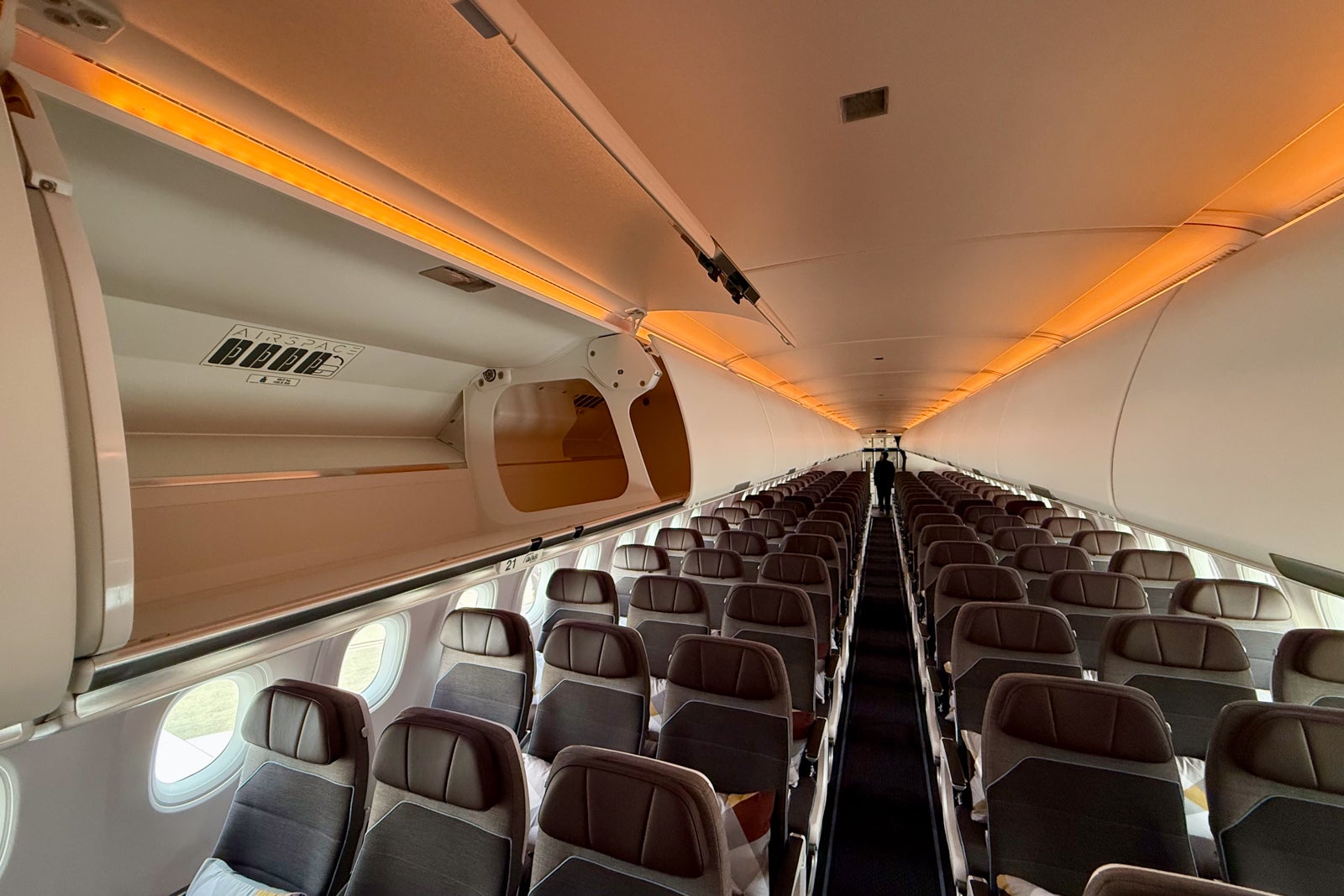
The good news is that this jet features massively oversized overhead bins, so finding room for your rollaboard bag shouldn’t be an issue.
There are just three standard-sized lavatories for the 144 economy flyers. Two lavatories are located at the front of the cabin and one at the back.

The entire jet is connected to Viasat’s satellite Wi-Fi service, which should offer living-room-quality download speeds once in flight. I look forward to trying this service on the delivery flight and will report back.
Etihad Airbus A321LR routes
Etihad’s Airbus A321LR unlocks a whole new slew of destinations for the airline and more.
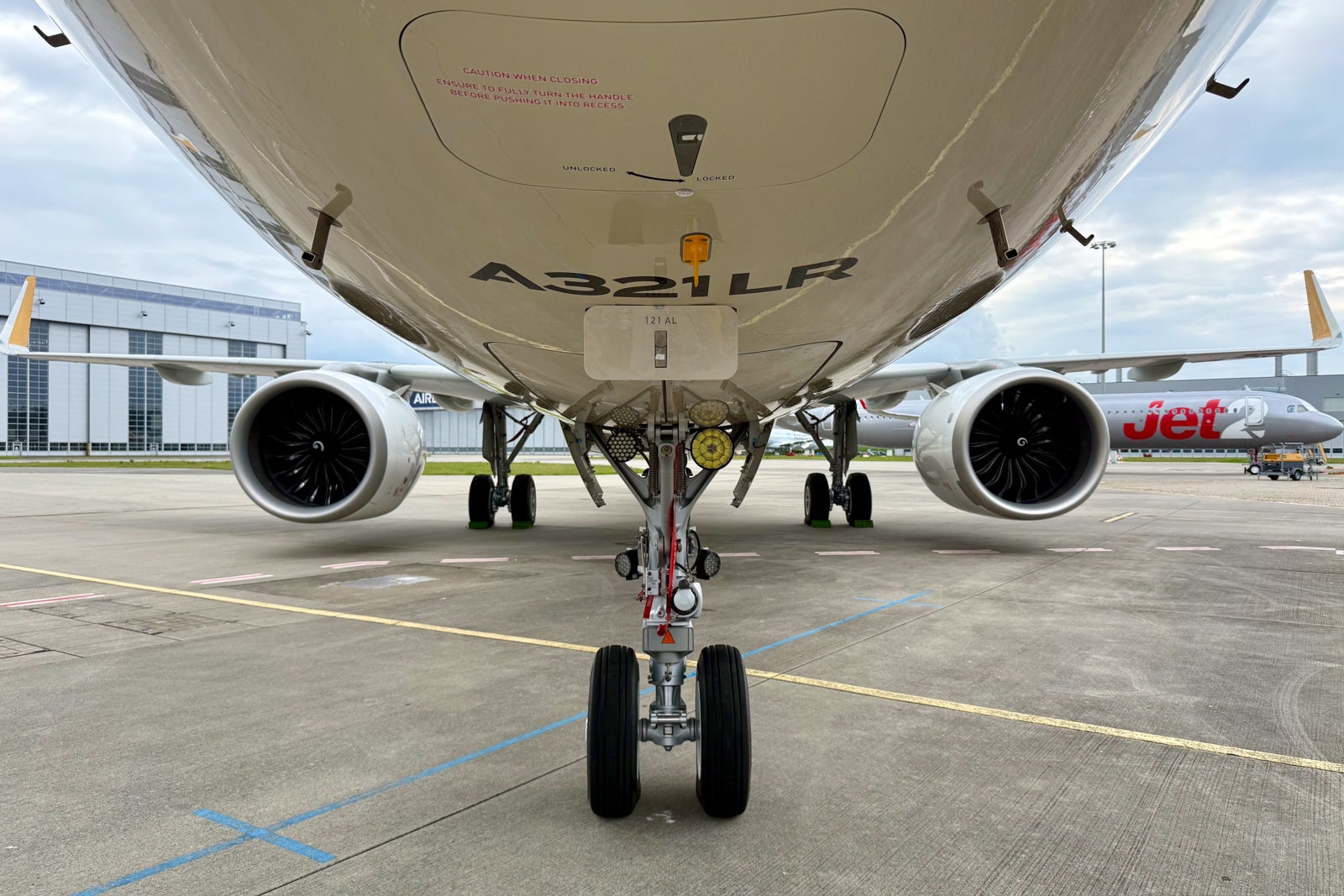
Etihad plans to receive 10 A321LRs by the end of the year (with 30 total on order), which it will deploy to places like Chiang Mai, Thailand, the Seychelles and even Paris.
The inaugural commercial flight is scheduled for Aug. 1 from Abu Dhabi to Phuket, Thailand, but this jet will be used on many more routes in the coming months.
The deployment strategy is three-pronged. For one, the A321LR allows Etihad to introduce first-class and business-class suites to markets that aren’t ready for the capacity of a wide-body. Examples of this include Chiang Mai in Thailand and Algiers in Algeria.
Meanwhile, another type of destination that’s suited for the A321LR is one that’s in a roughly four-hour radius of Abu Dhabi, but that warrants a premium-heavy product, such as the Seychelles.
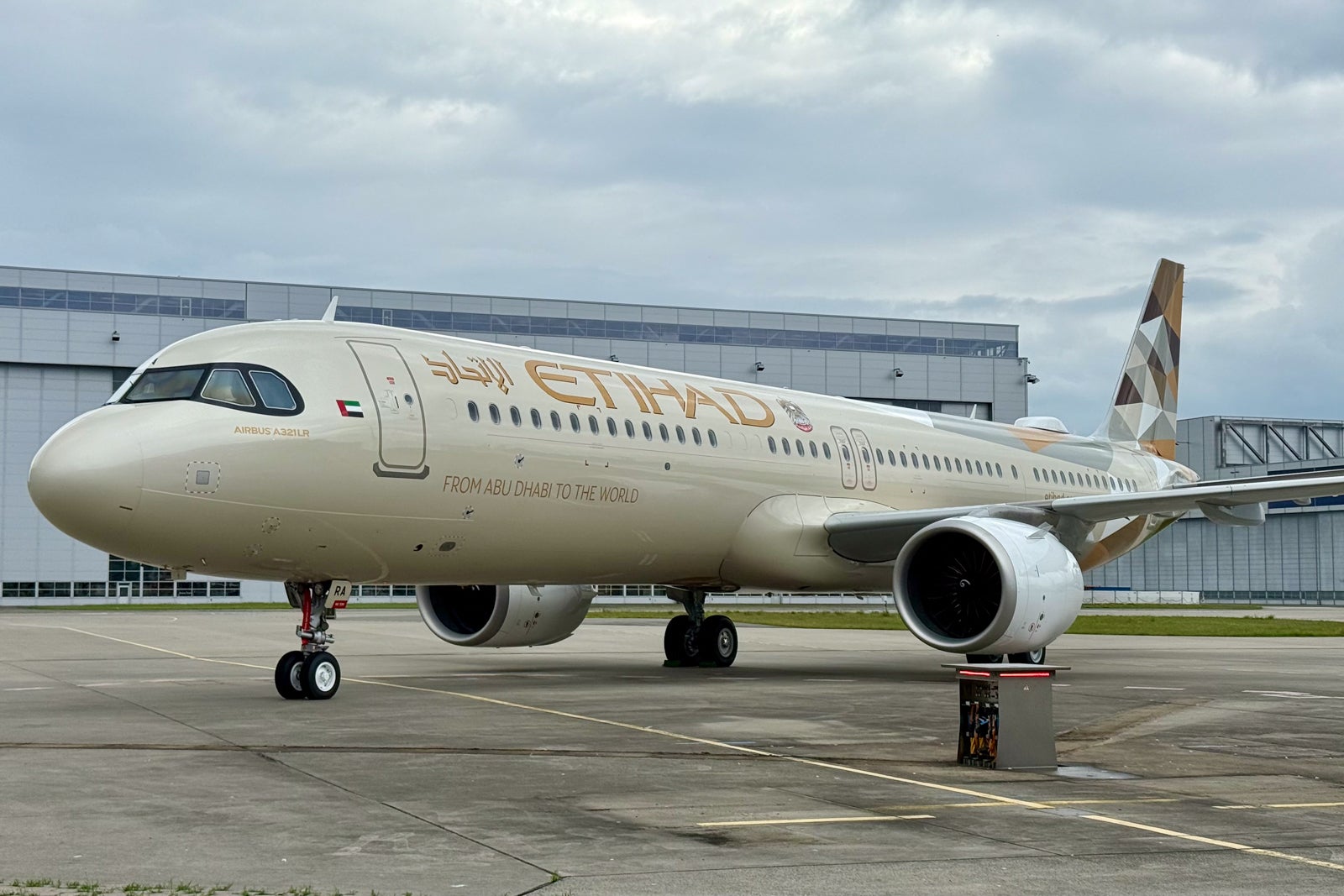
Finally, the Airbus A321LR will be deployed in select business markets to help Etihad offer more frequency. One such example is Paris, which isn’t ready for a third daily wide-body flight but could do well with the 160 additional seats on the A321LR.
More deployment details are expected in the coming weeks and months, so be sure to stay tuned to TPG for the latest.
Bottom line
All in all, Etihad’s A321LR is undoubtedly the airline’s best narrow-body jet, and it even rivals some of its wide-bodies in terms of modern amenities and tech-forward enhancements.
The first- and business-class cabins should be a welcome upgrade for anyone who has flown on Etihad’s other single-aisle planes, and even if you’re connecting from a long-haul destination with the “full” premium experience, this plane shouldn’t let you down.

That’s the same in economy, where travelers can find a slew of updates from 4K TVs to faster Wi-Fi.
Nevertheless, this plane definitely feels “boutique” relative to the larger wide-body jets.
In Etihad’s case, the airline isn’t using the plane to replace twin-aisle planes (like you might find in select transatlantic markets from the U.S. to Europe), but even so, I’m sure there will be some flyers who will miss flying on a larger plane for a seven-hour voyage.
As for me, I’ll just hope I’m seated in the pointy end of the plane, where I can relax with a glass of Champagne and stretch my feet in a lie-flat bed.
Related reading:
- When is the best time to book flights for the cheapest airfare?
- The best airline credit cards
- What exactly are airline miles, anyway?
- 6 real-life strategies you can use when your flight is canceled or delayed
- Maximize your airfare: The best credit cards for booking flights
- The best credit cards to reach elite status
- What are points and miles worth? TPG’s monthly valuations
Editorial disclaimer: Opinions expressed here are the author’s alone, not those of any bank, credit card issuer, airline or hotel chain, and have not been reviewed, approved or otherwise endorsed by any of these entities.

